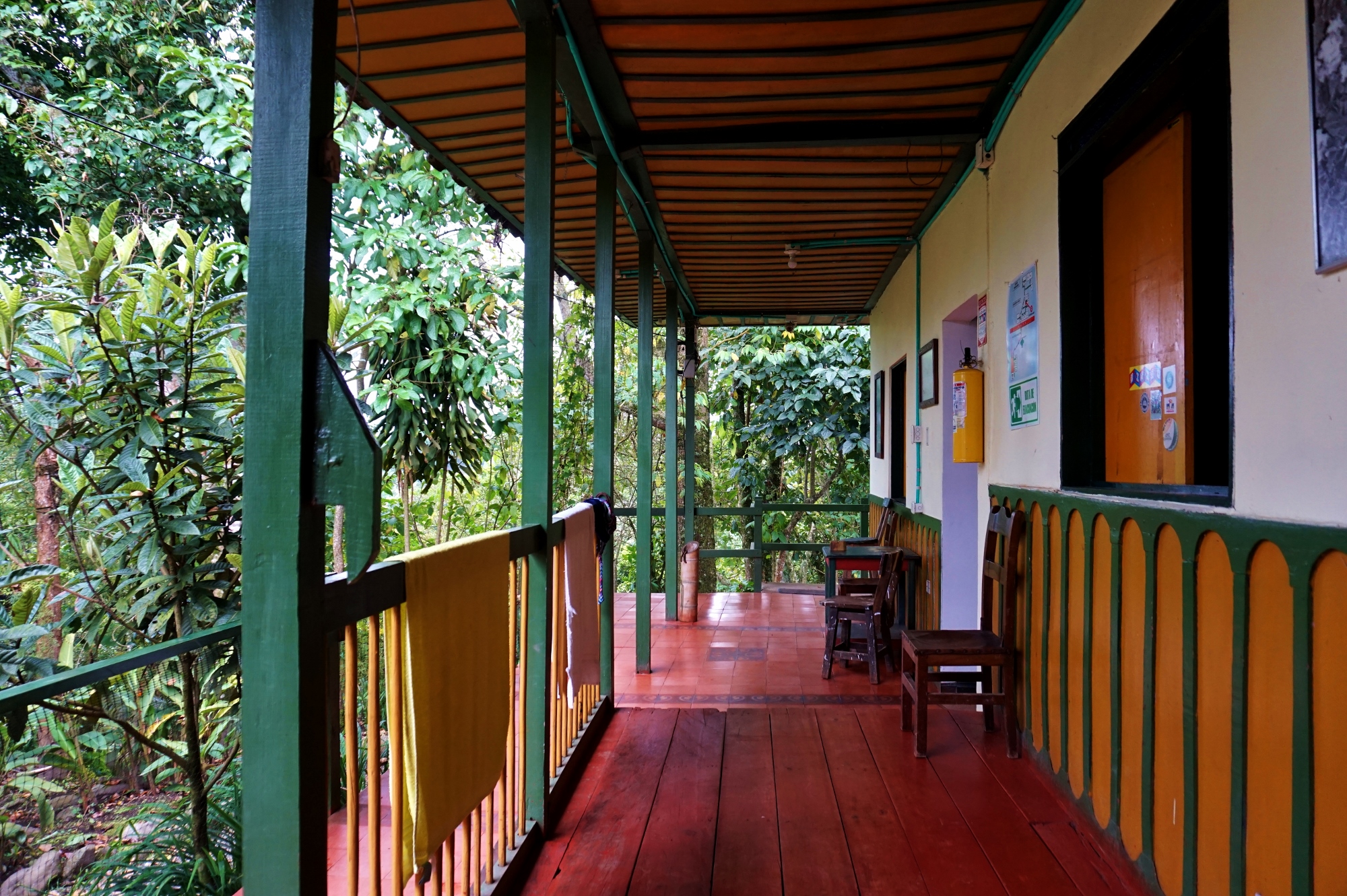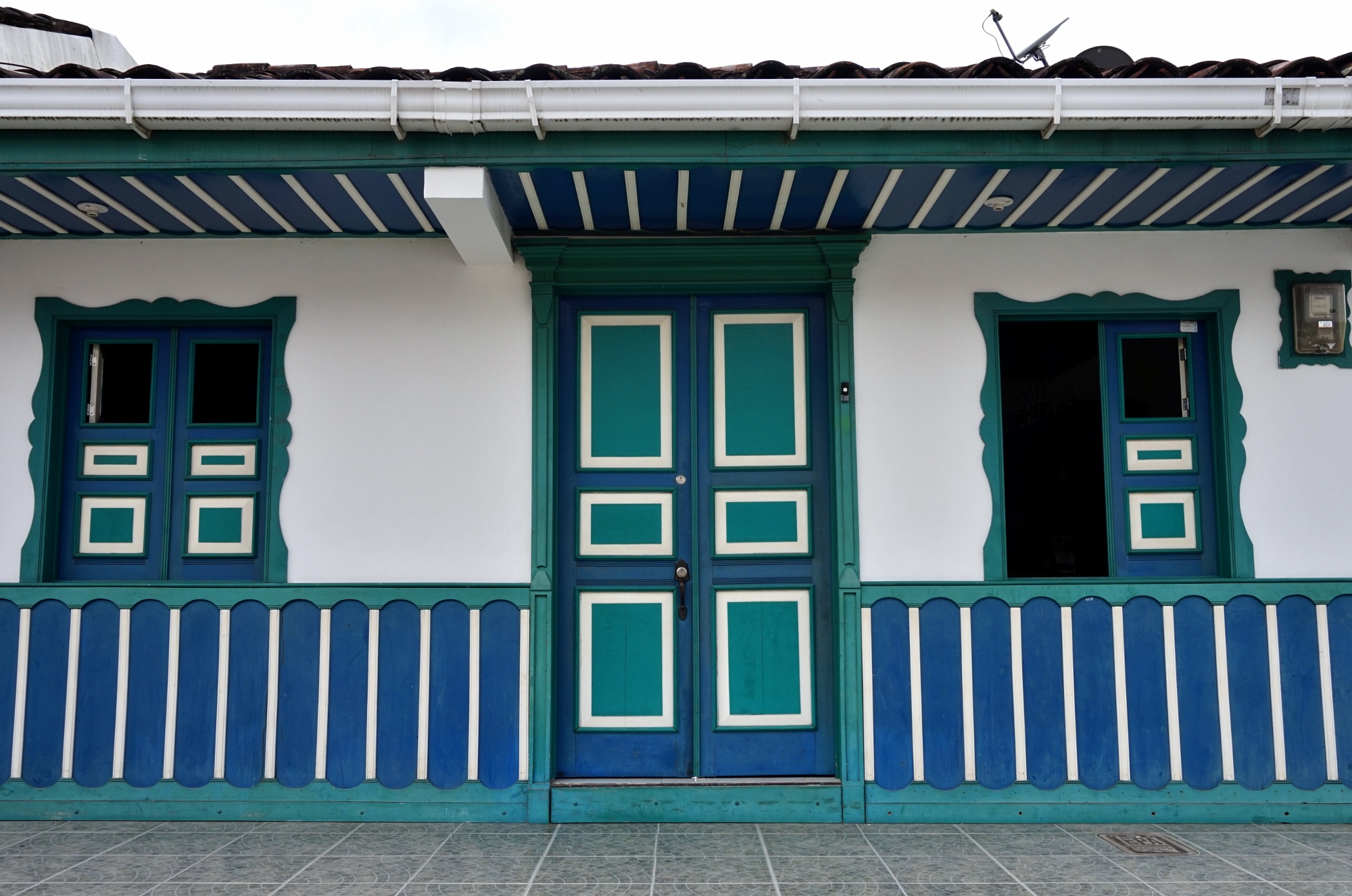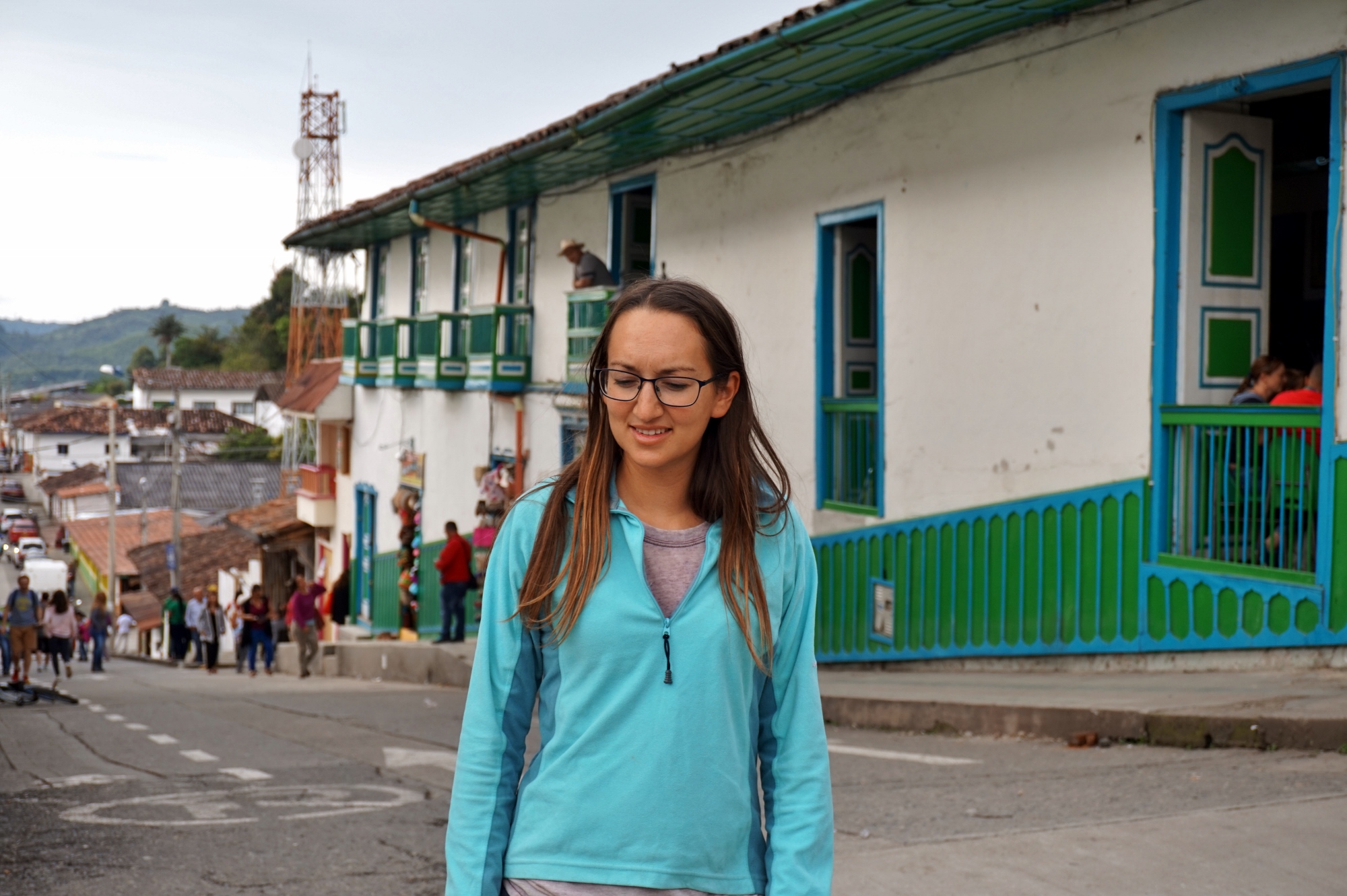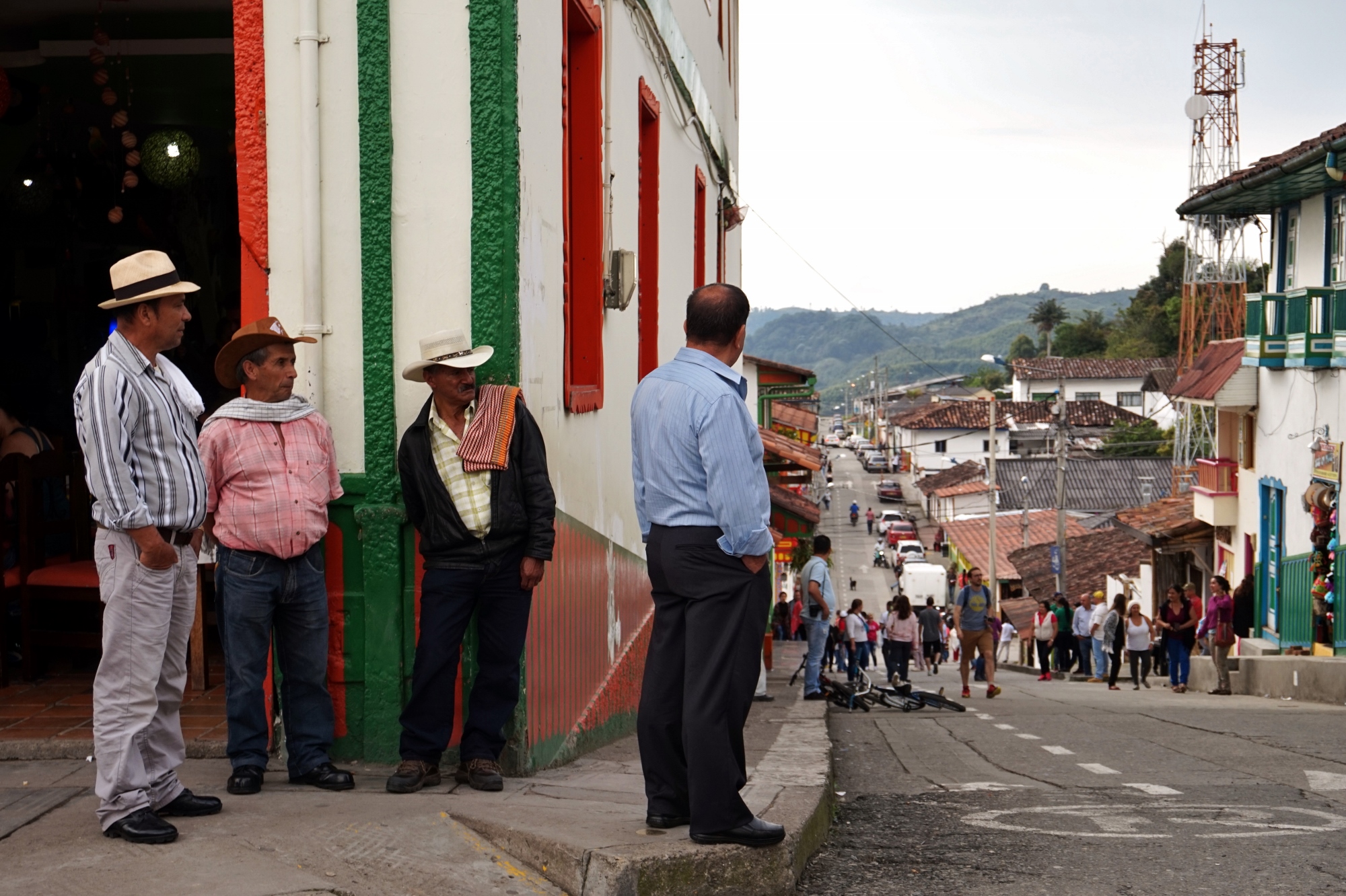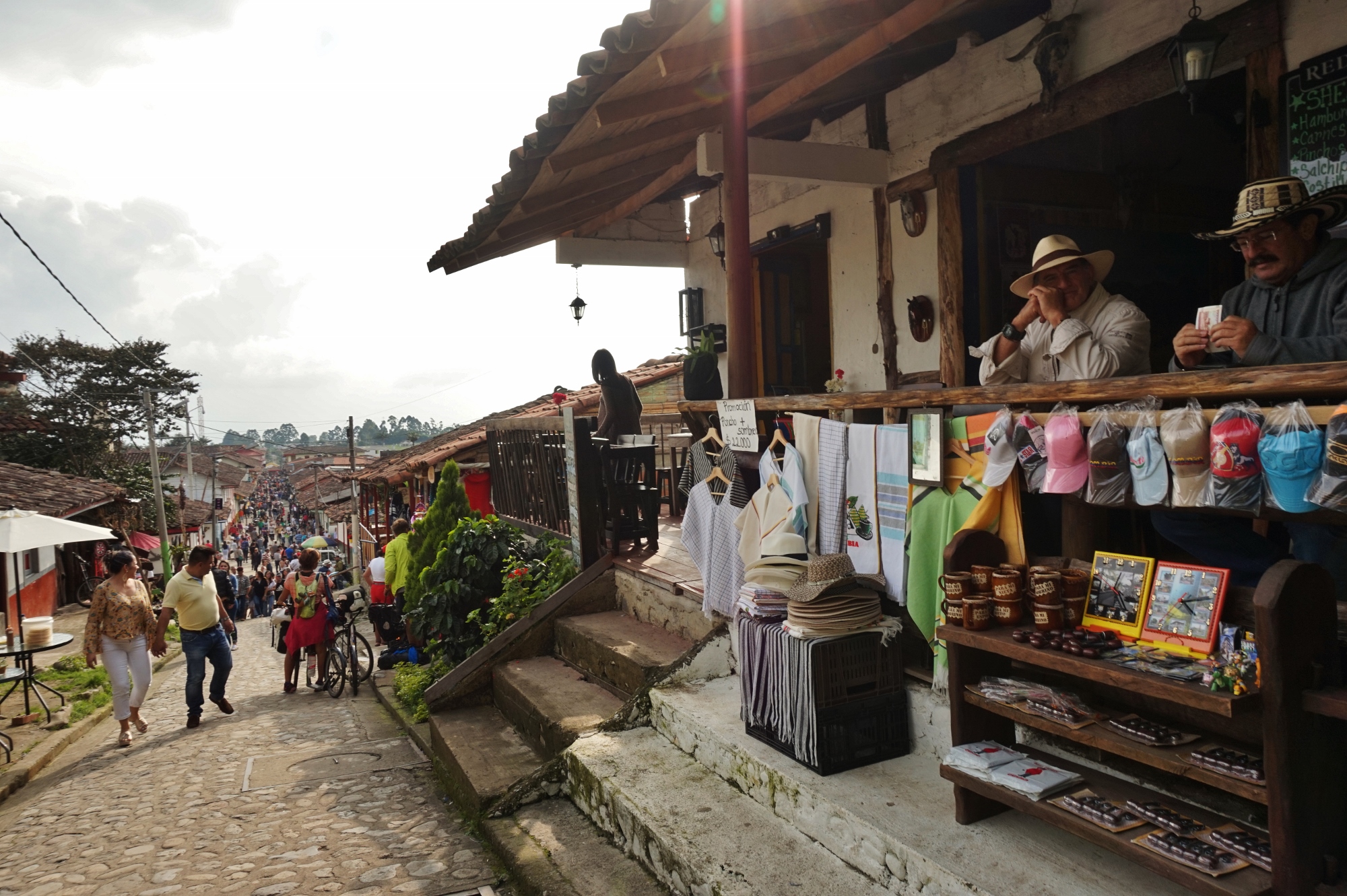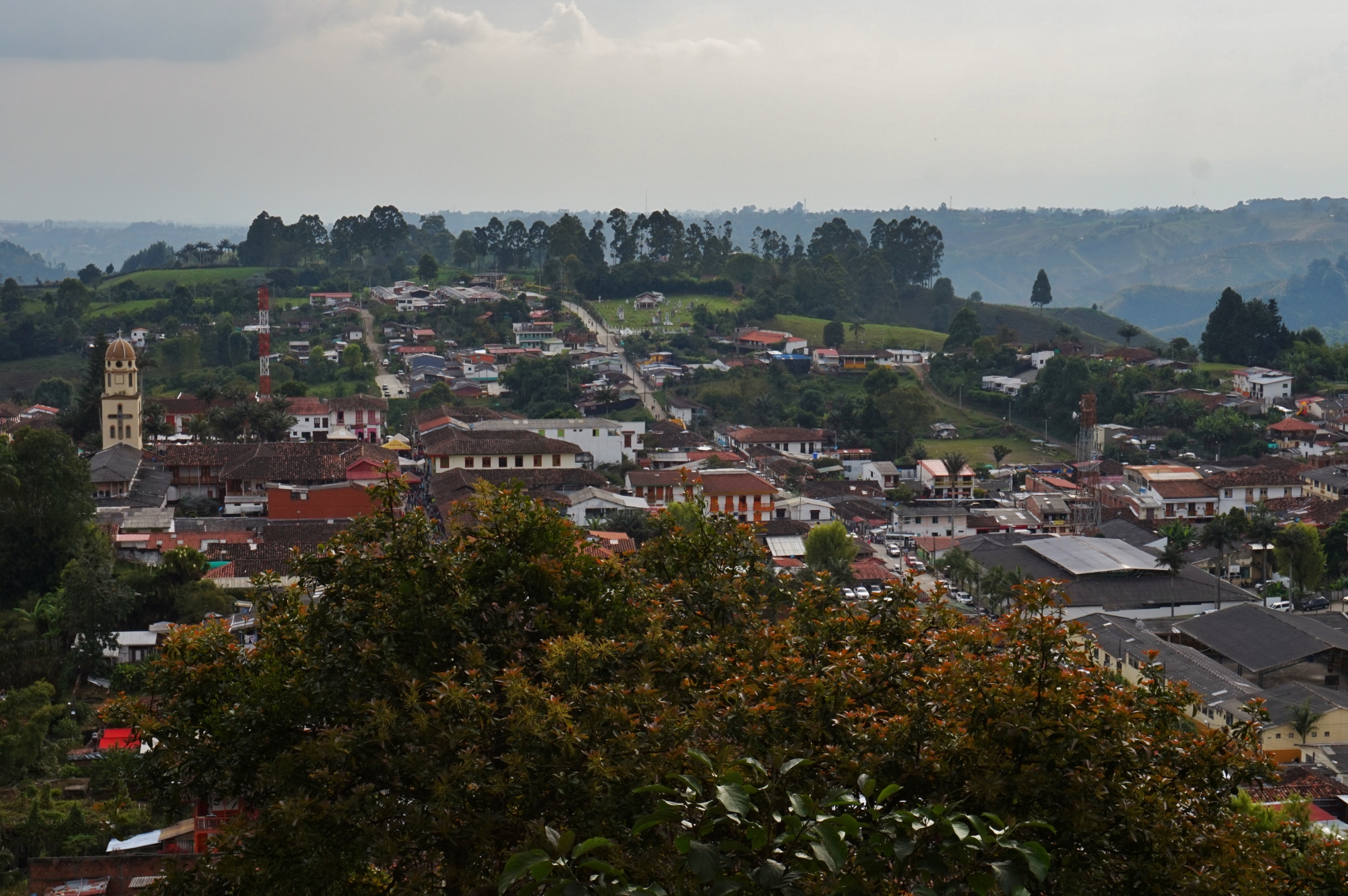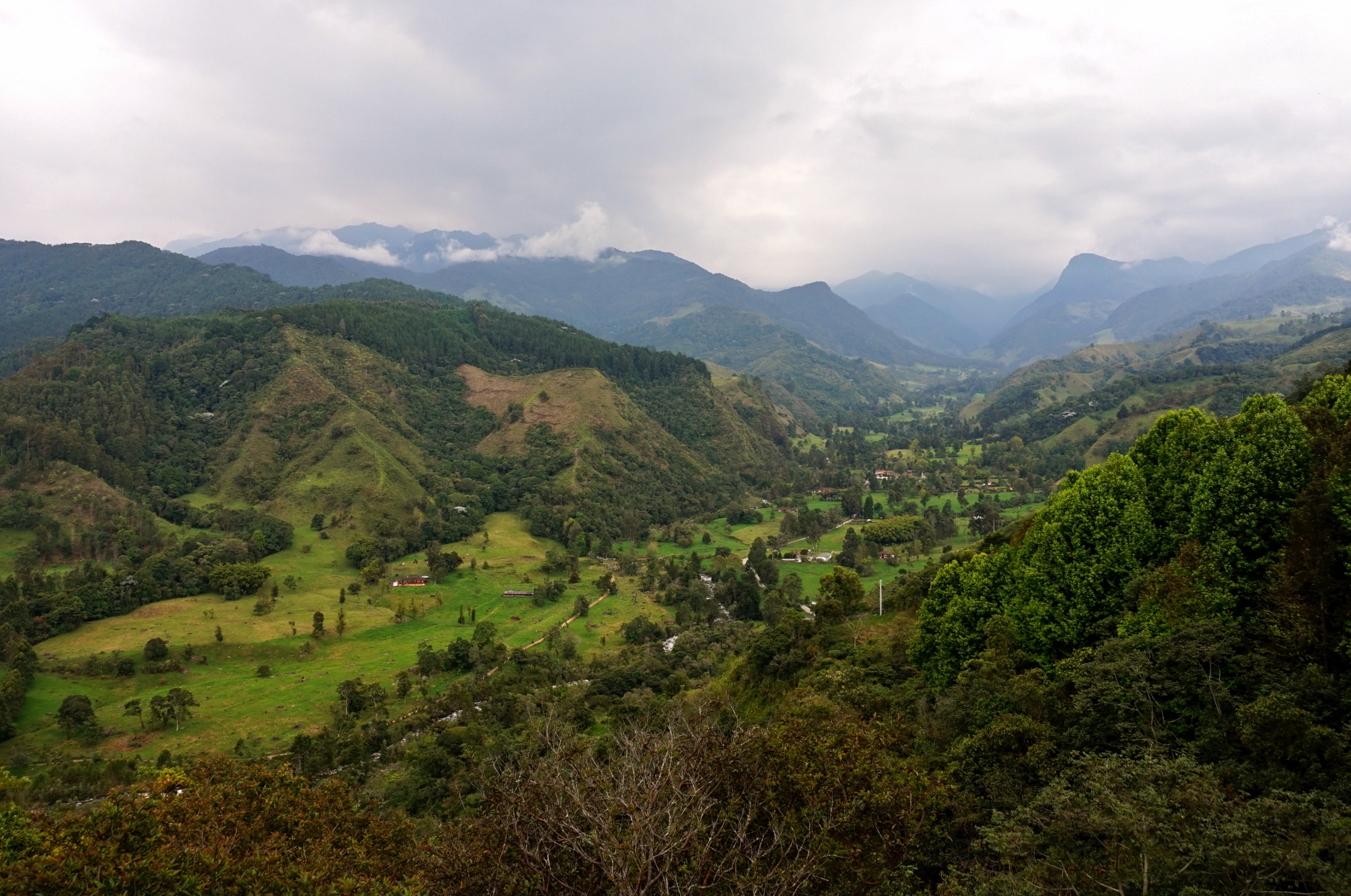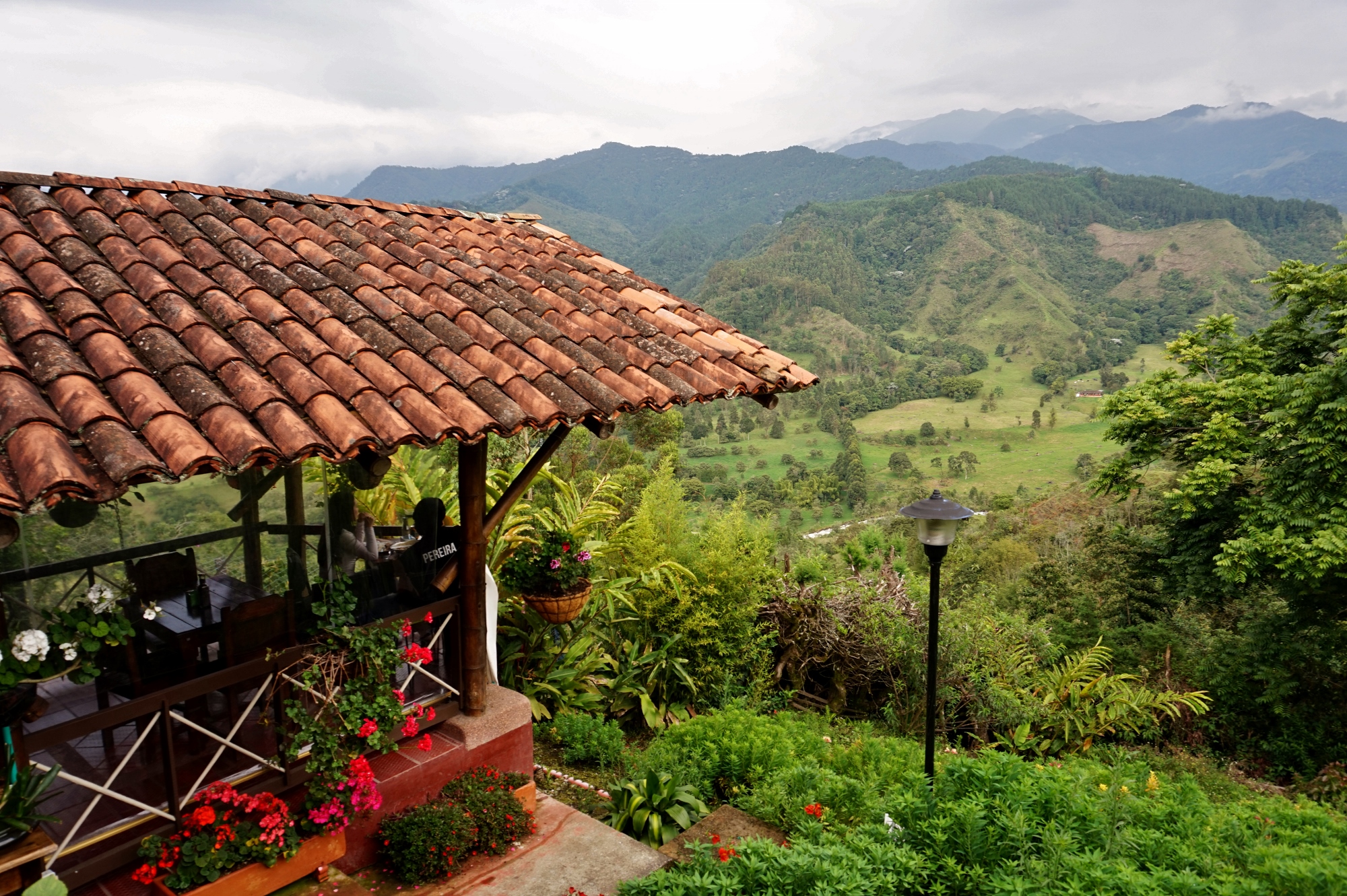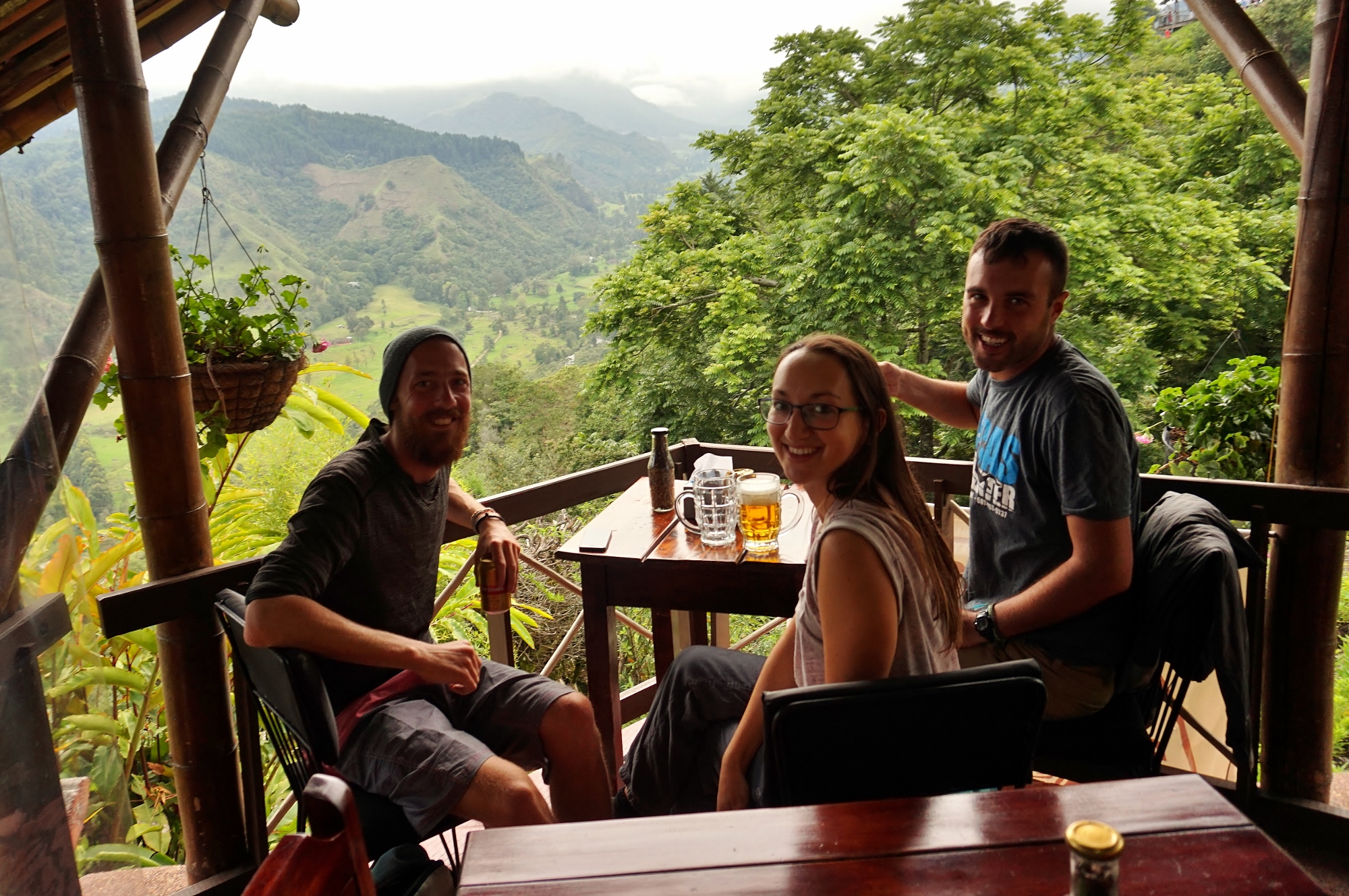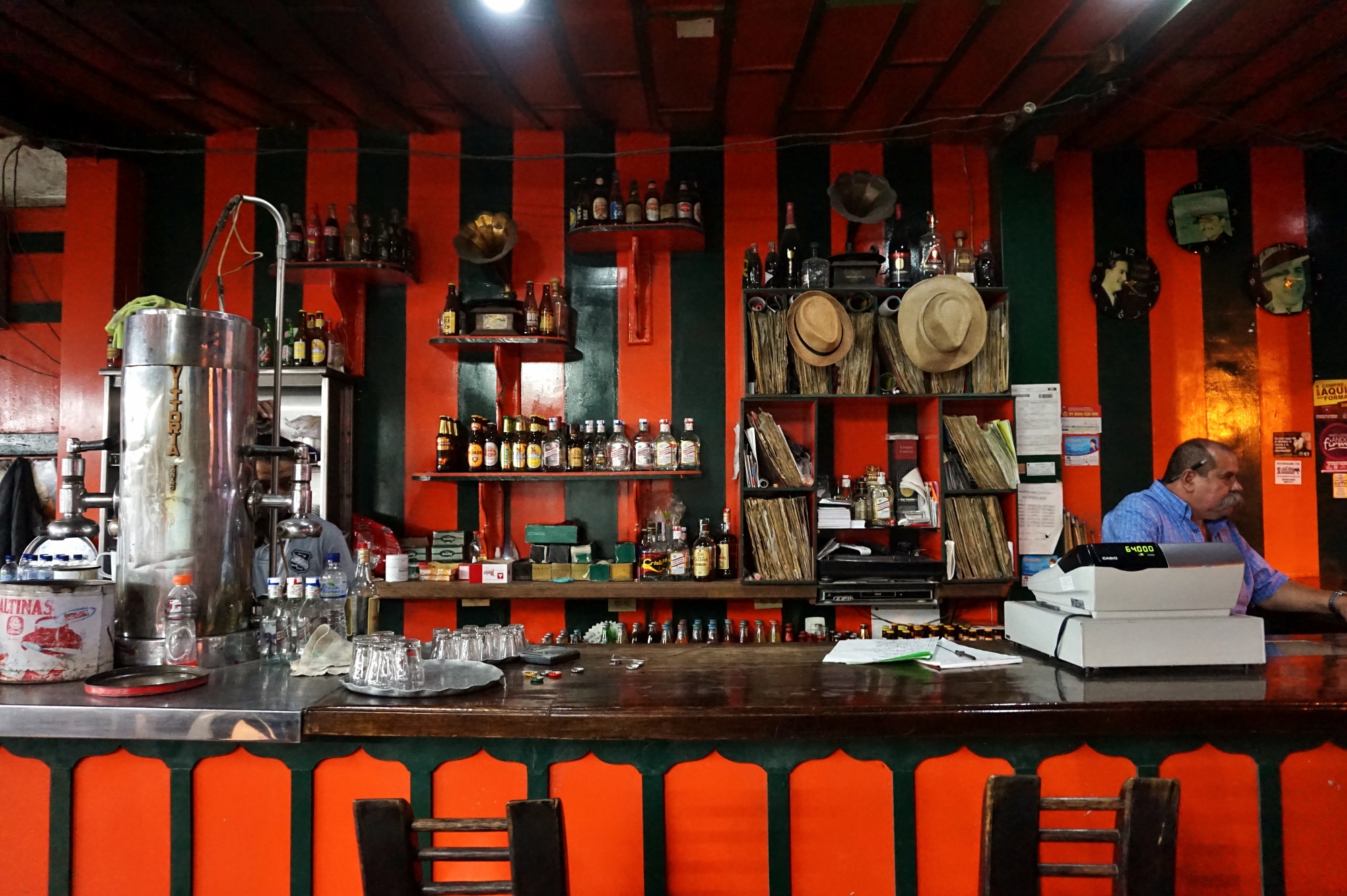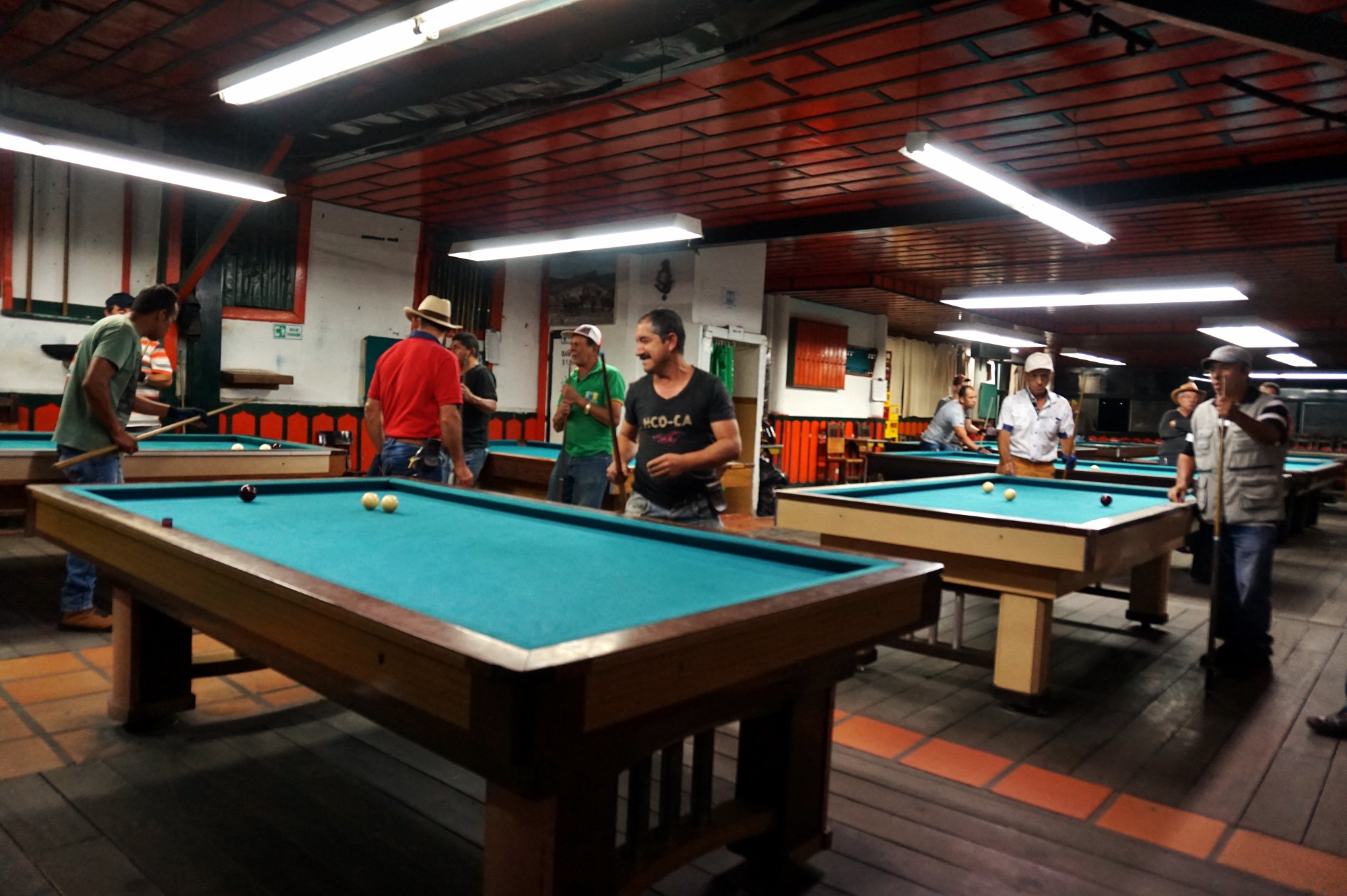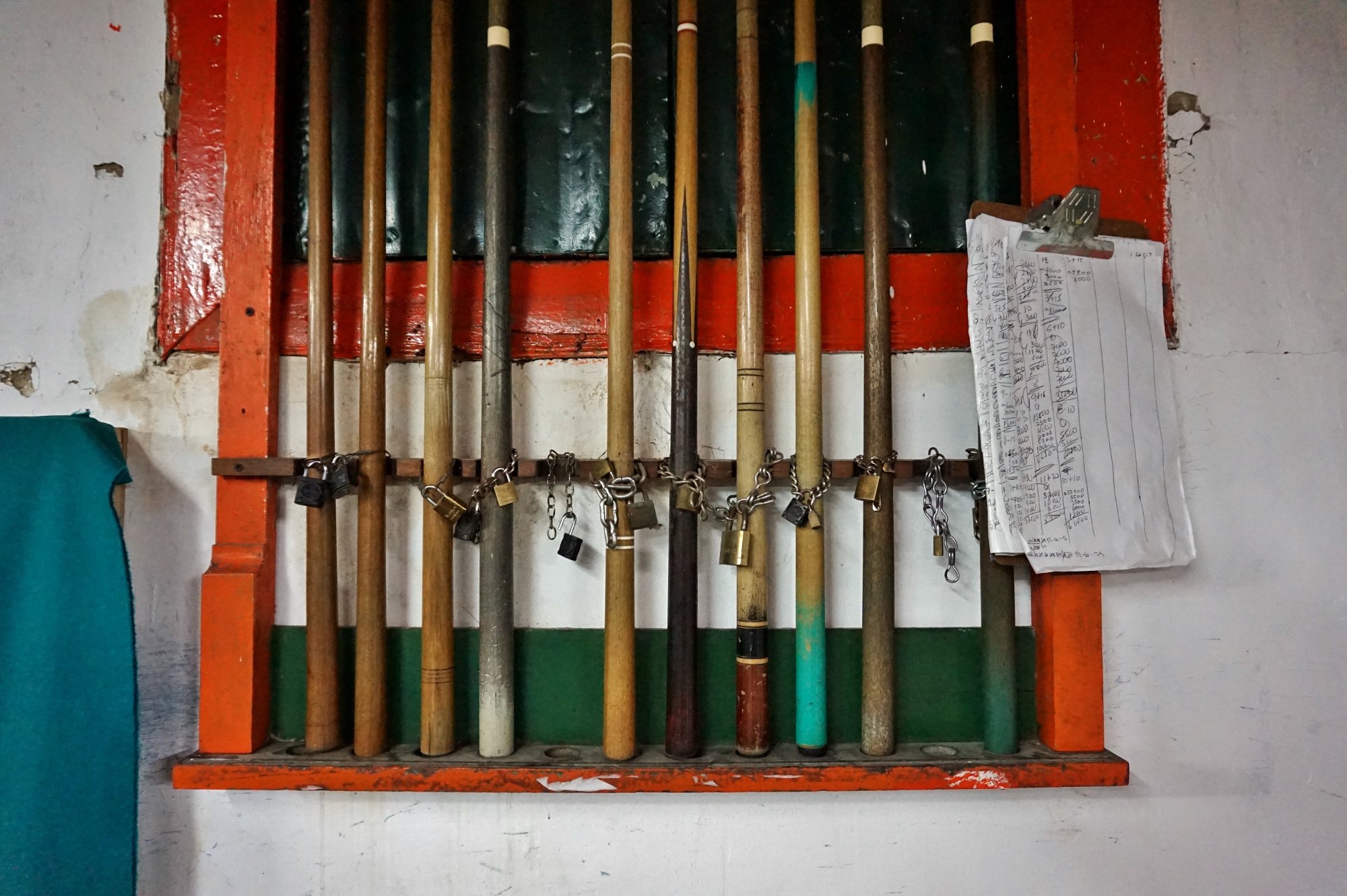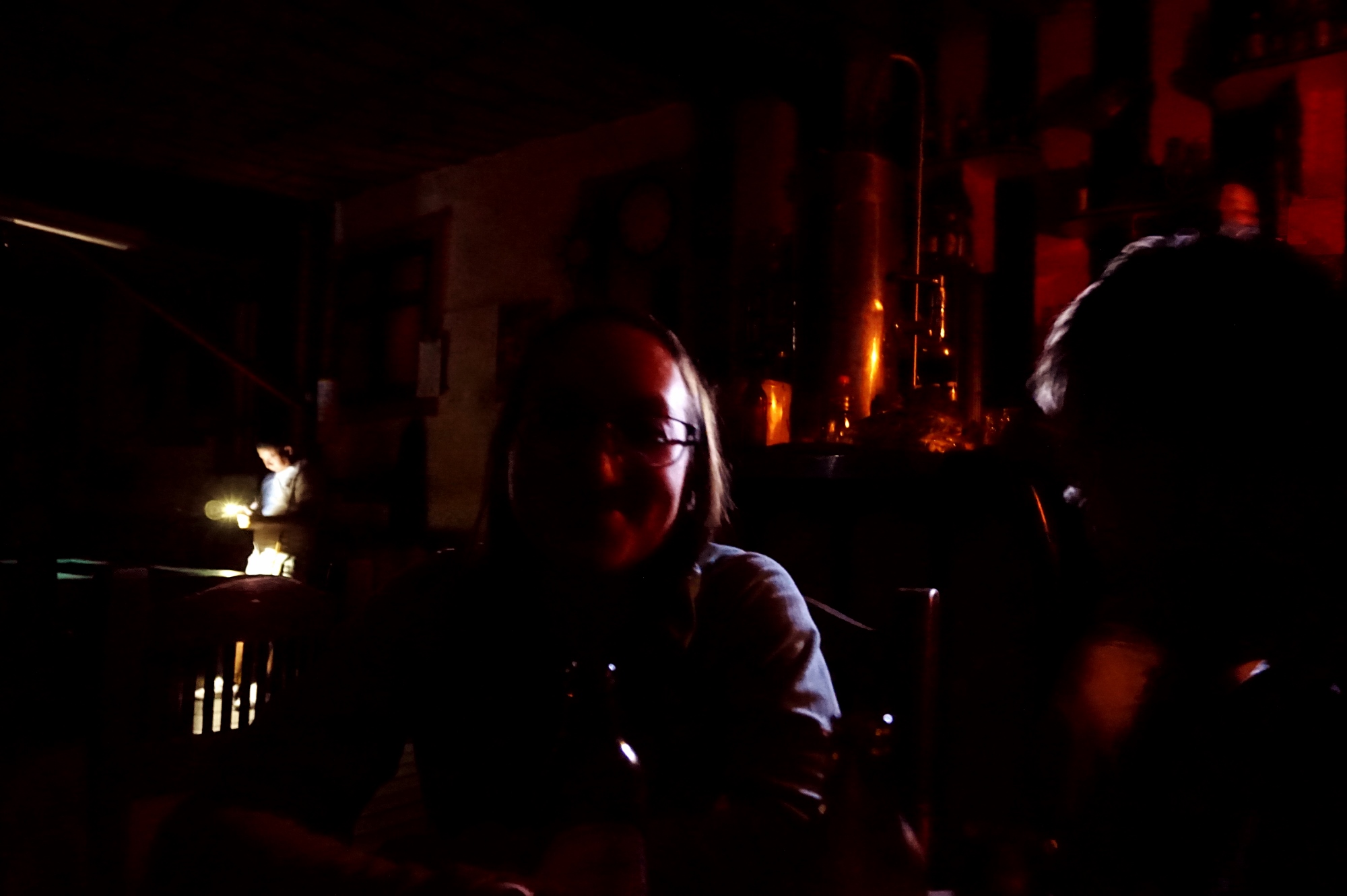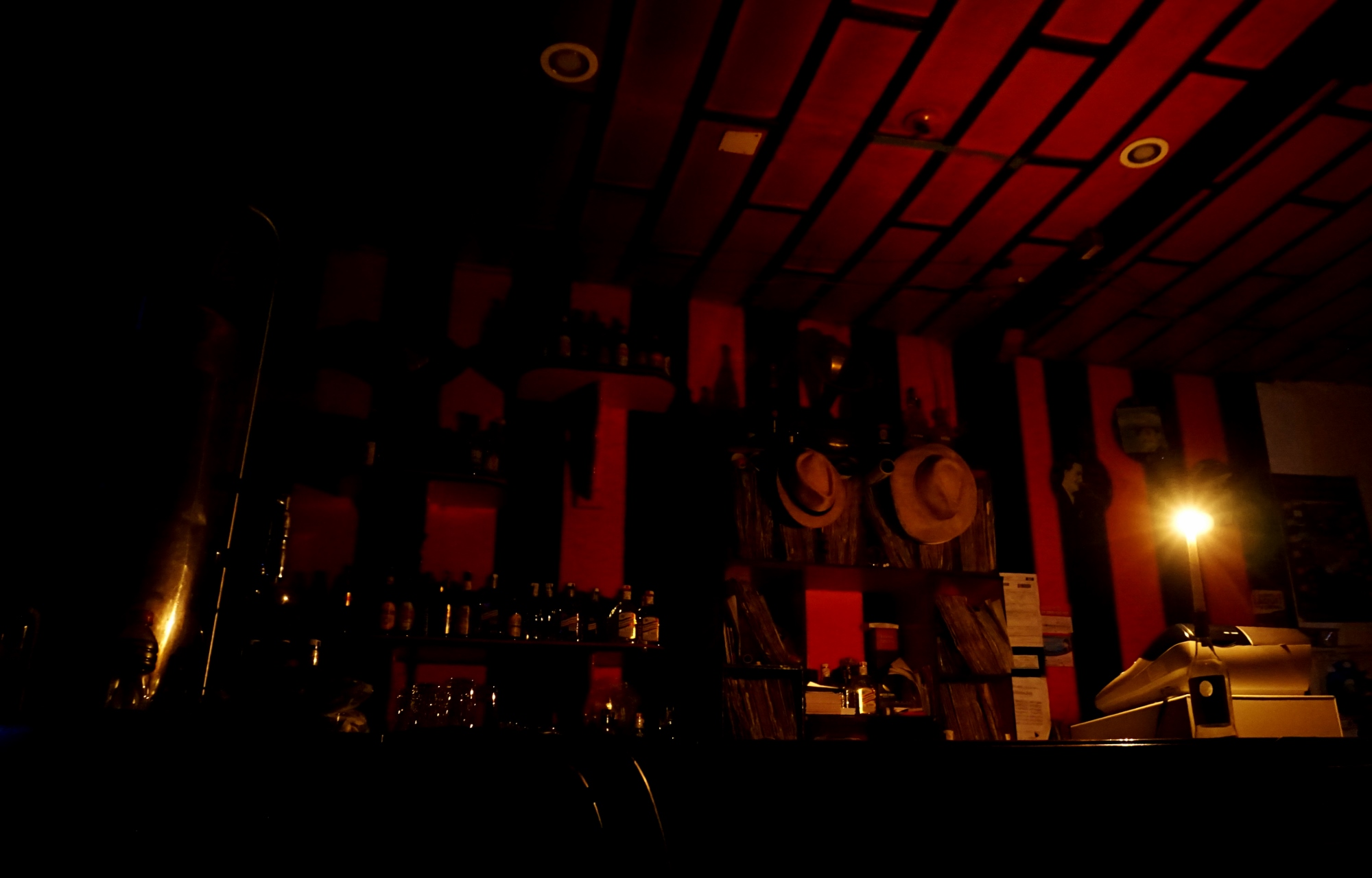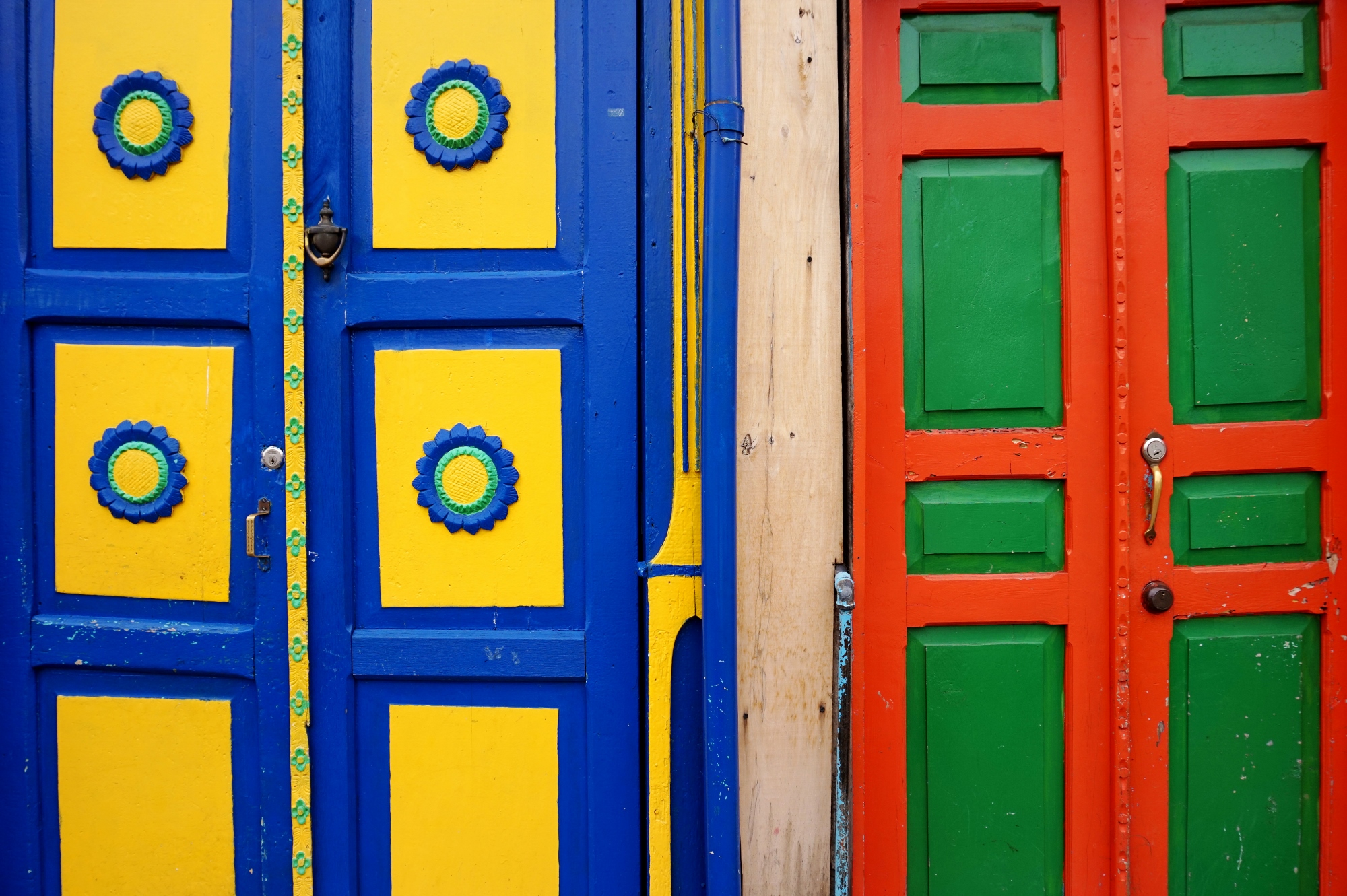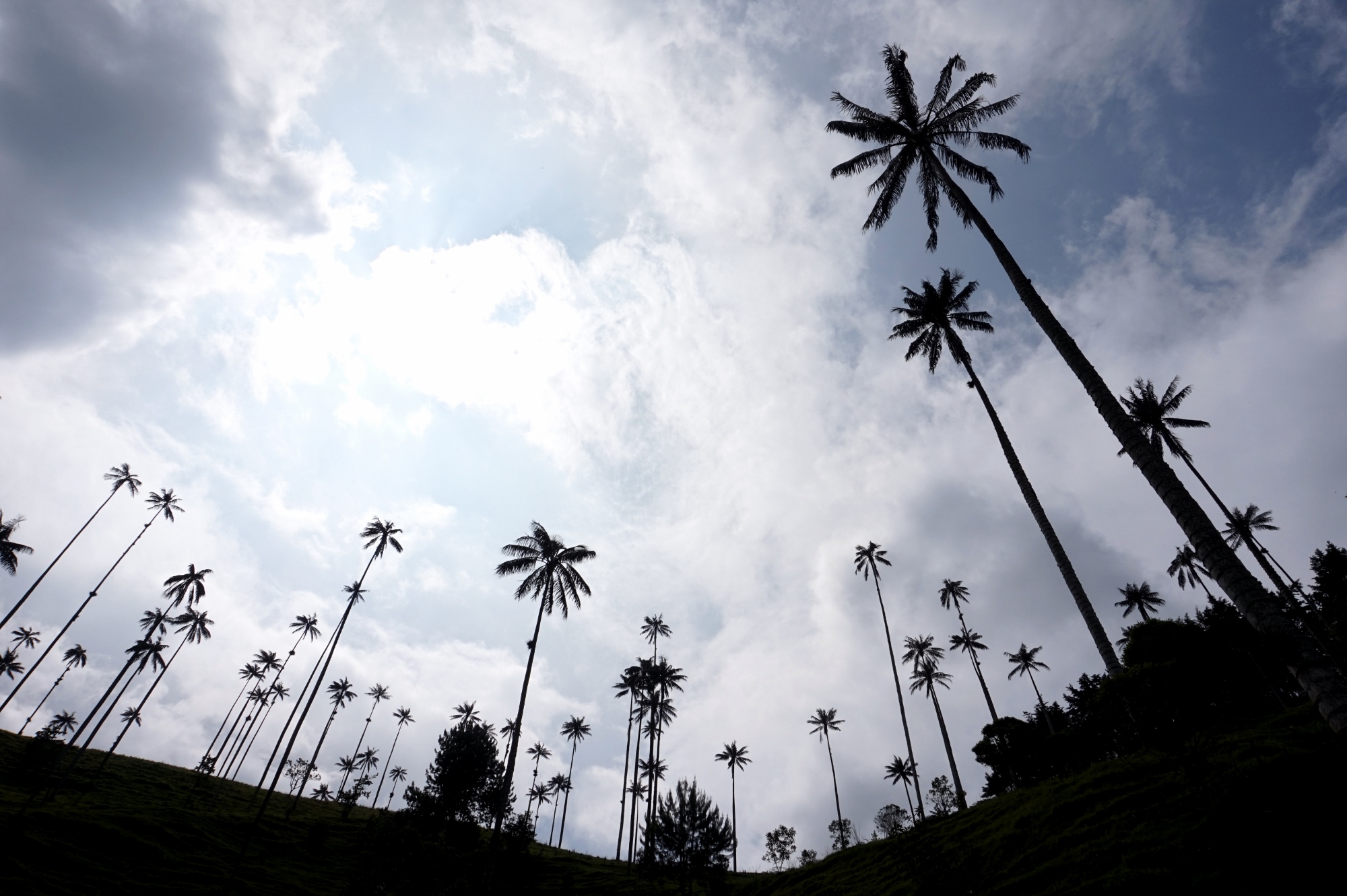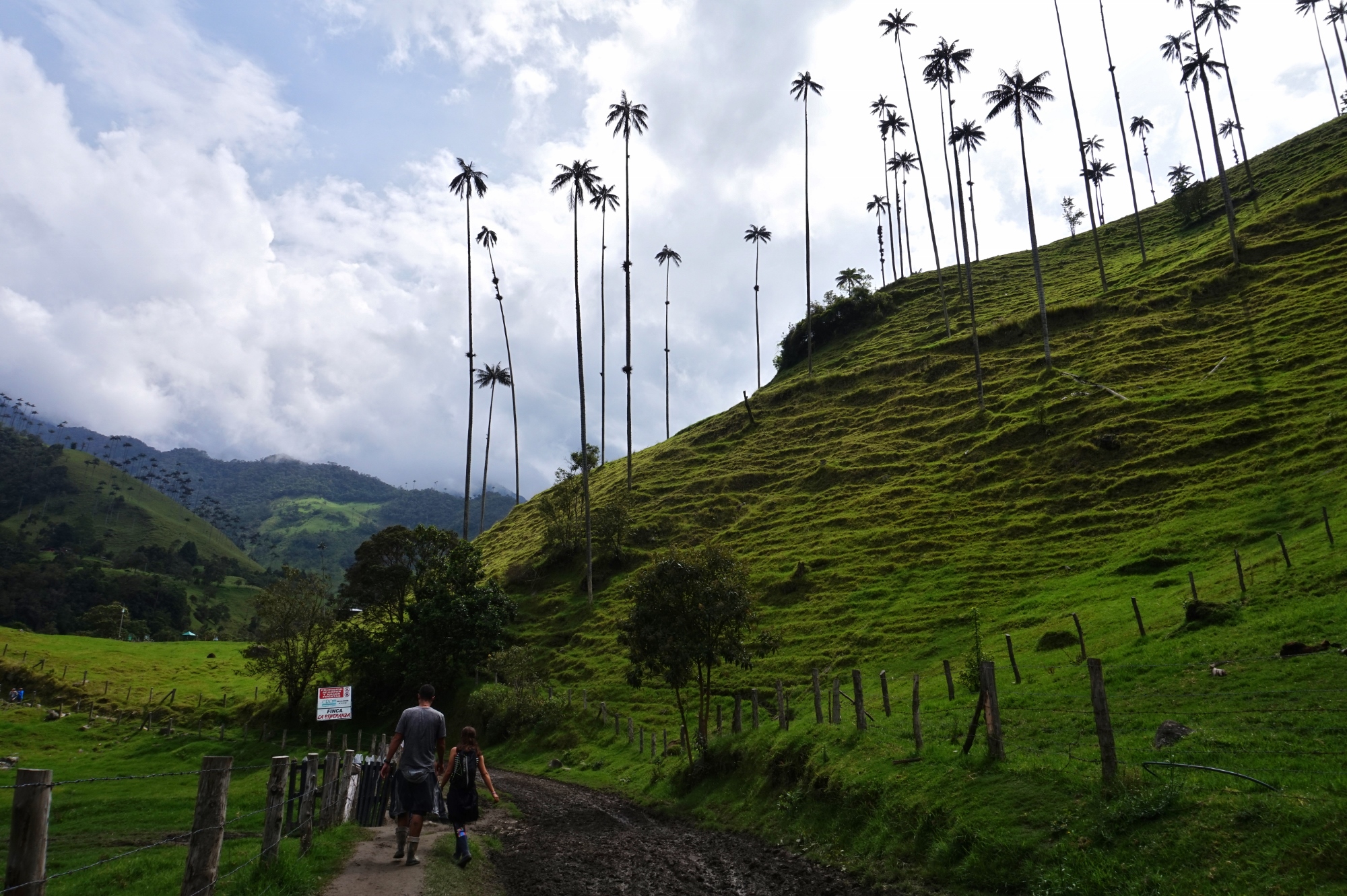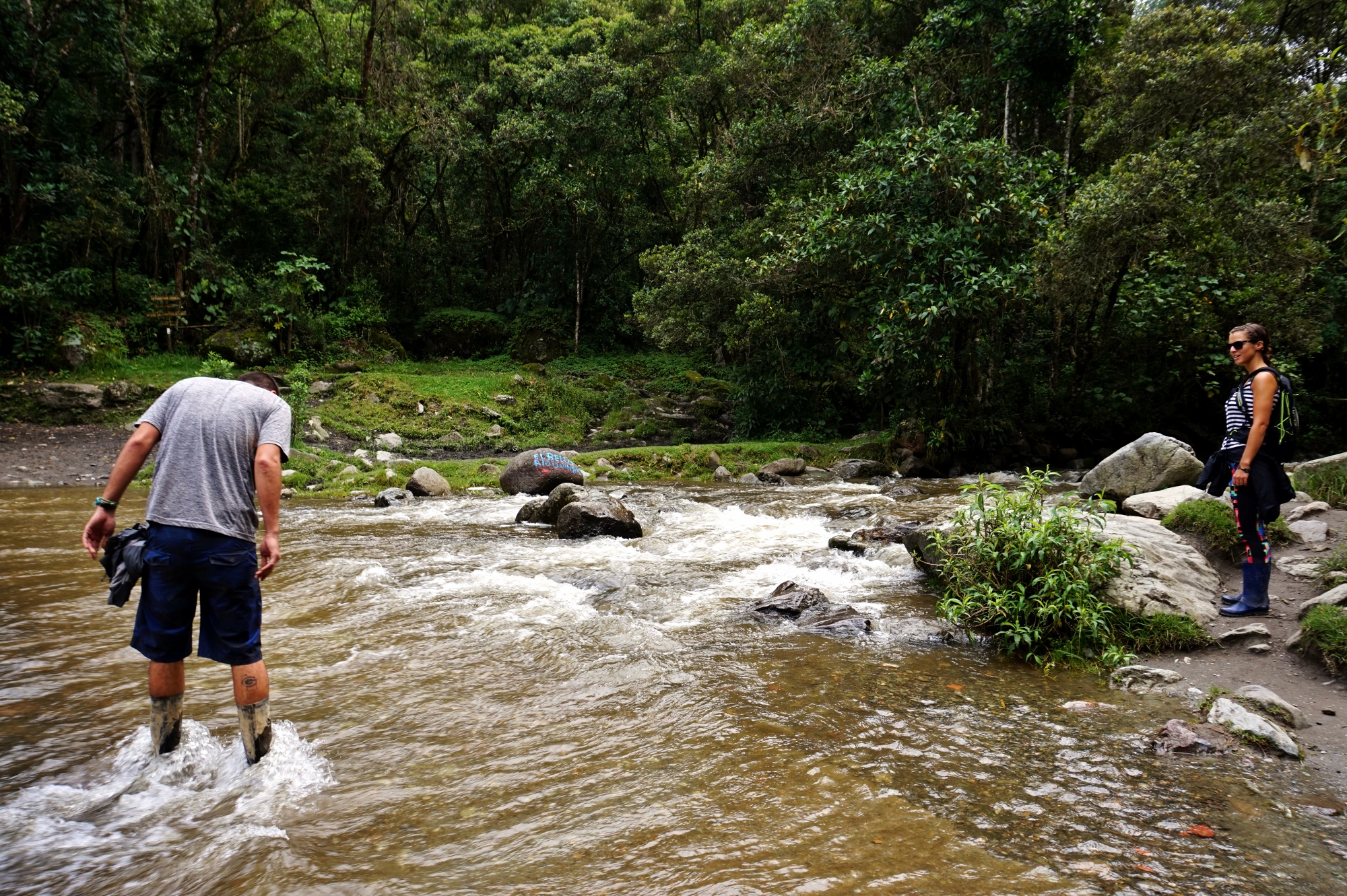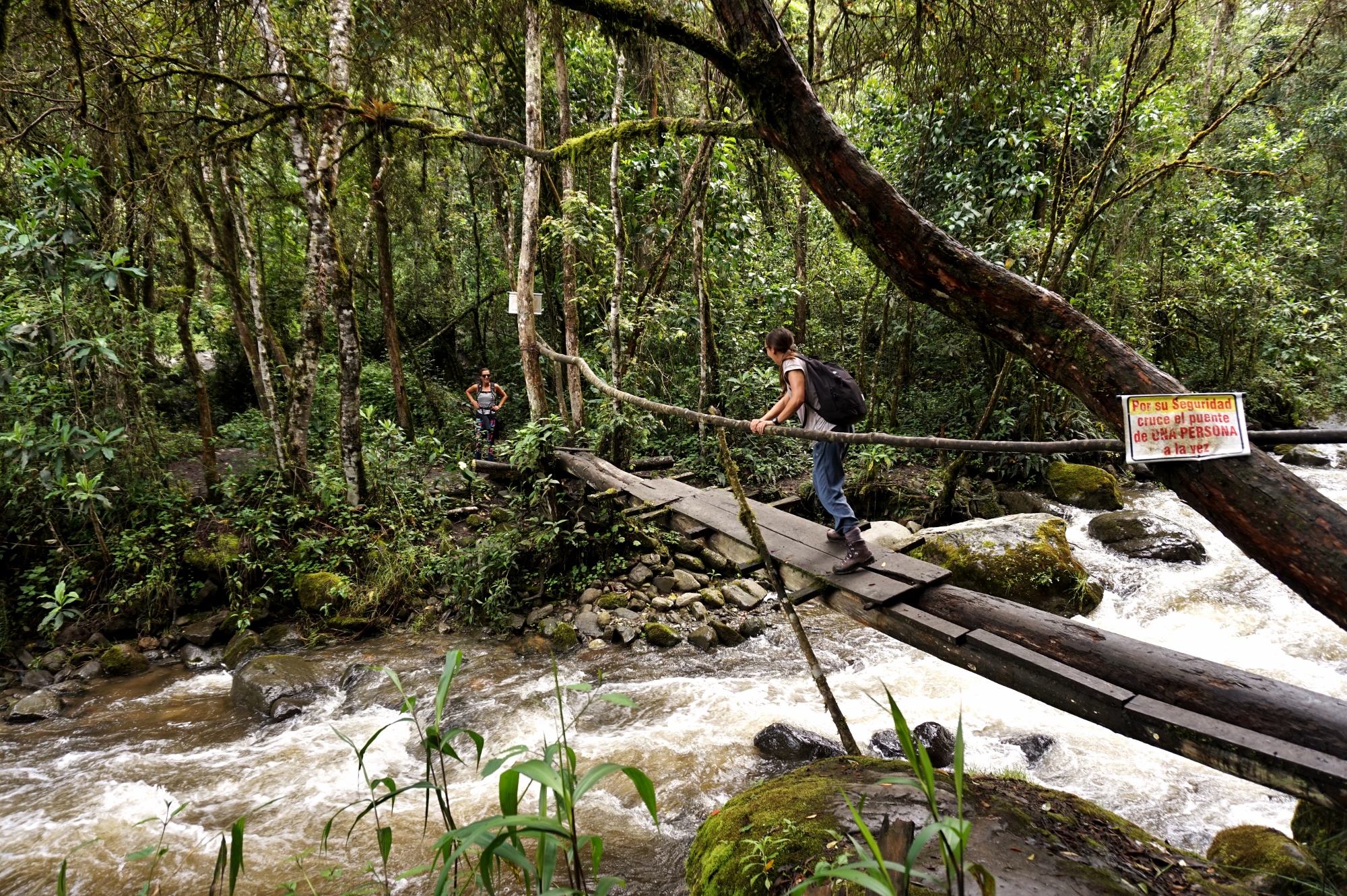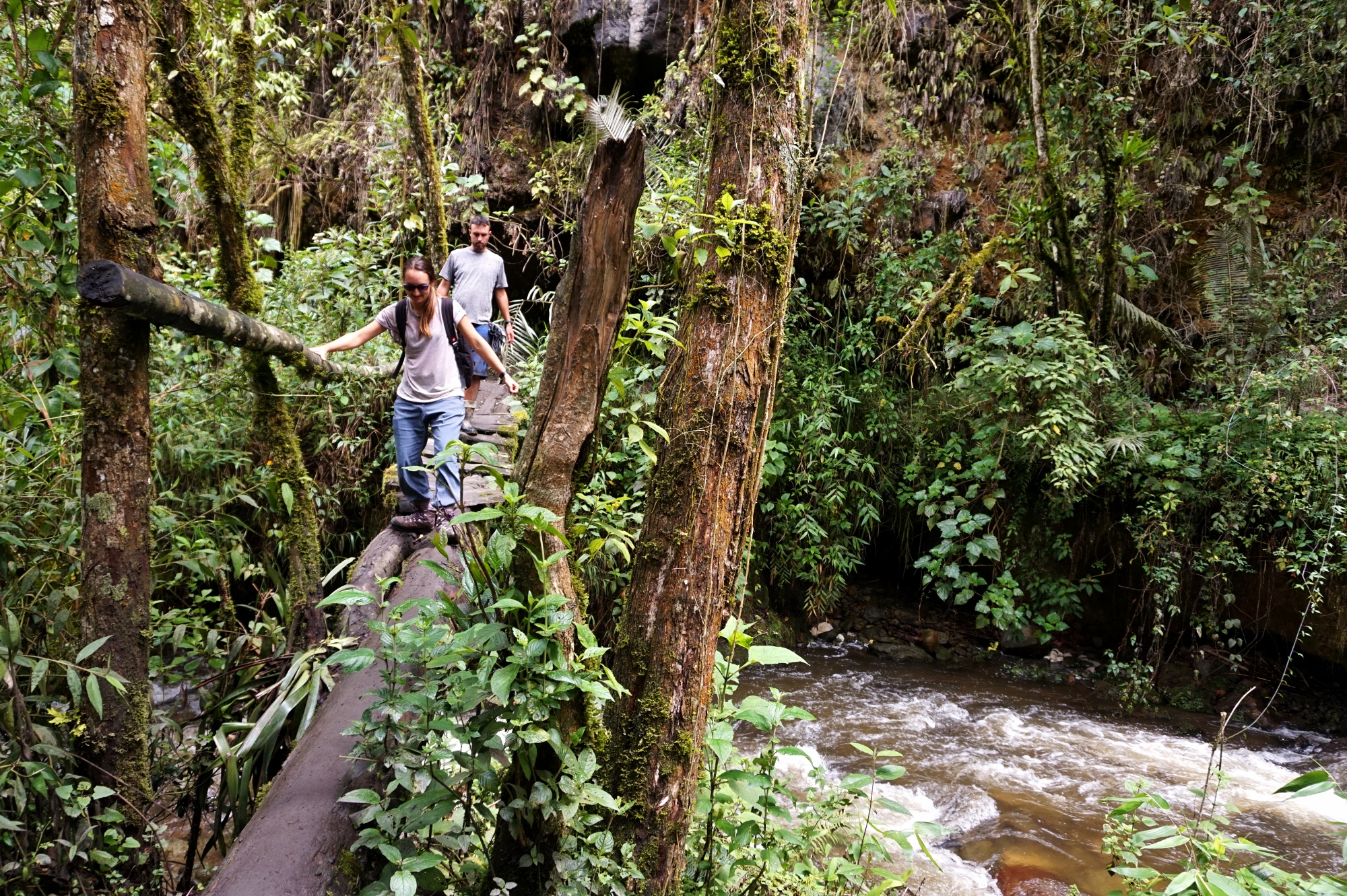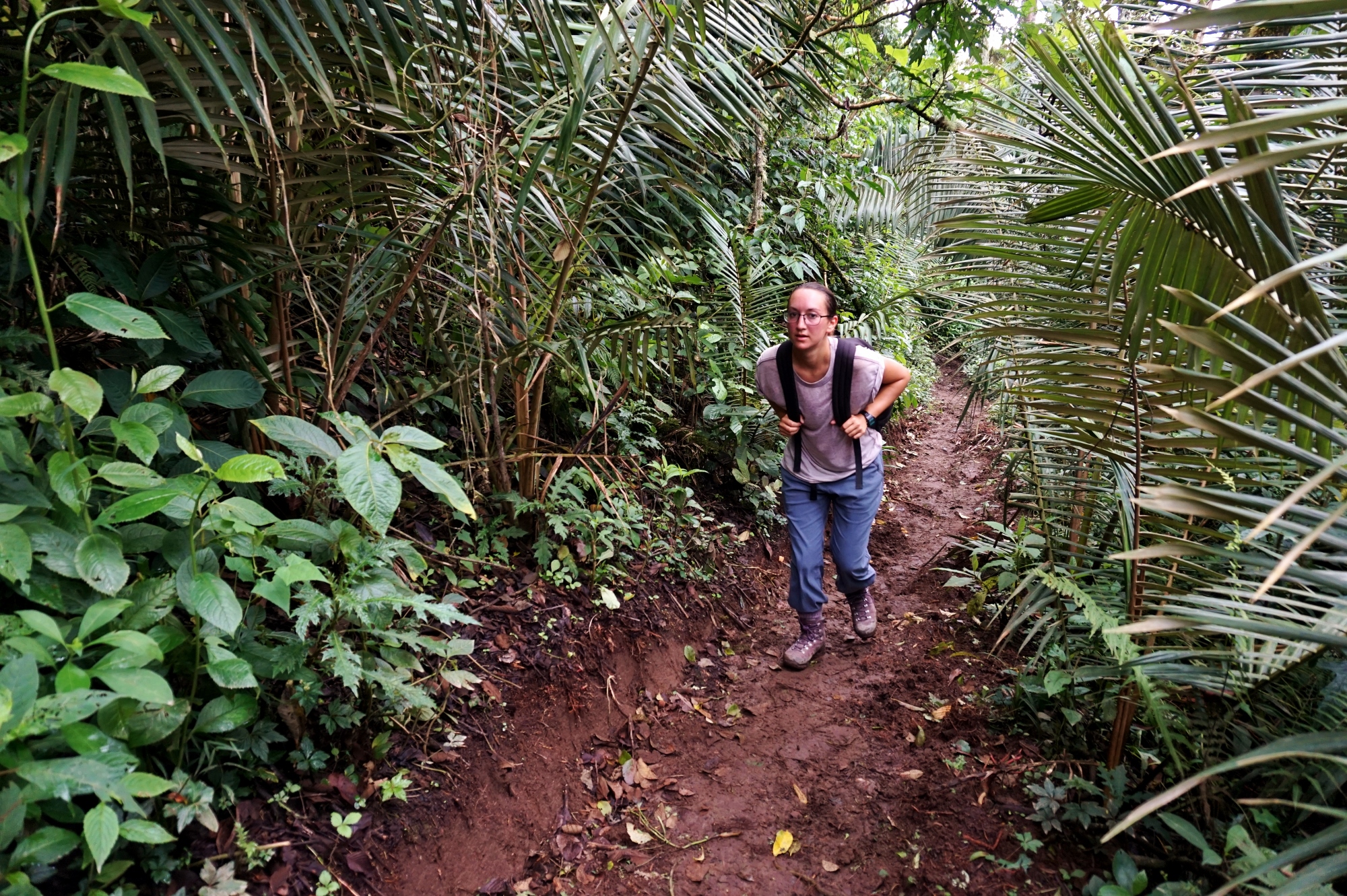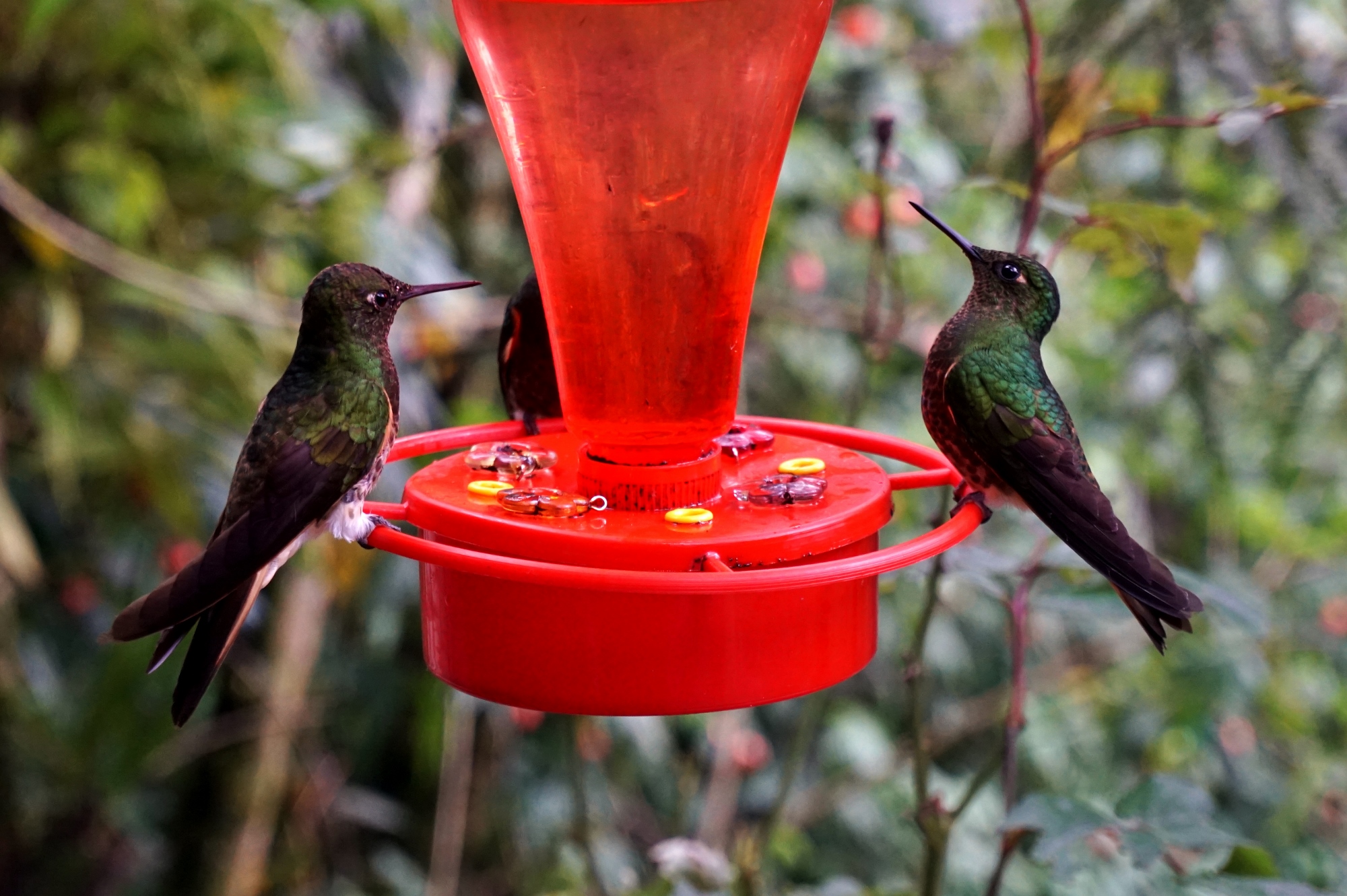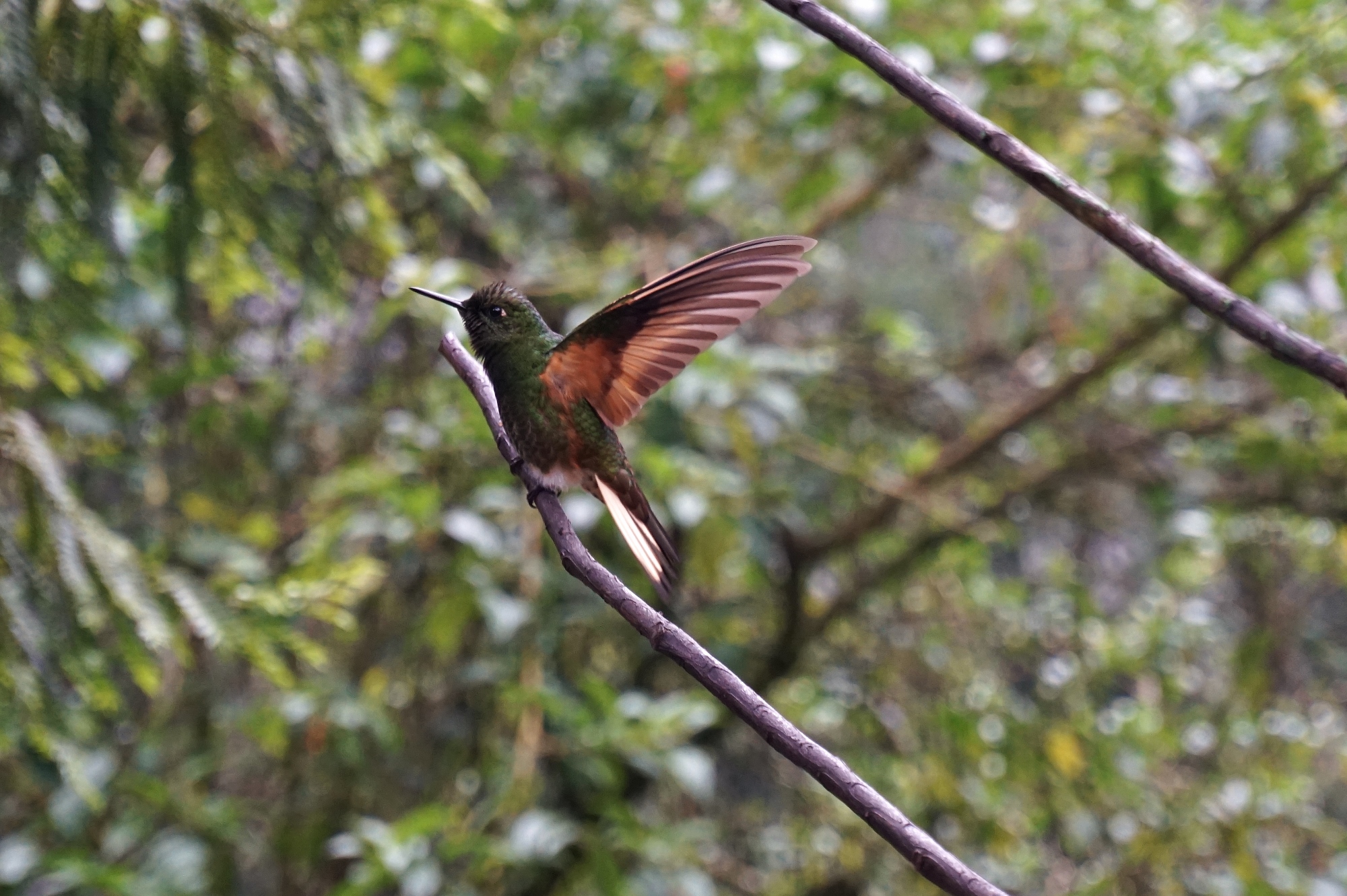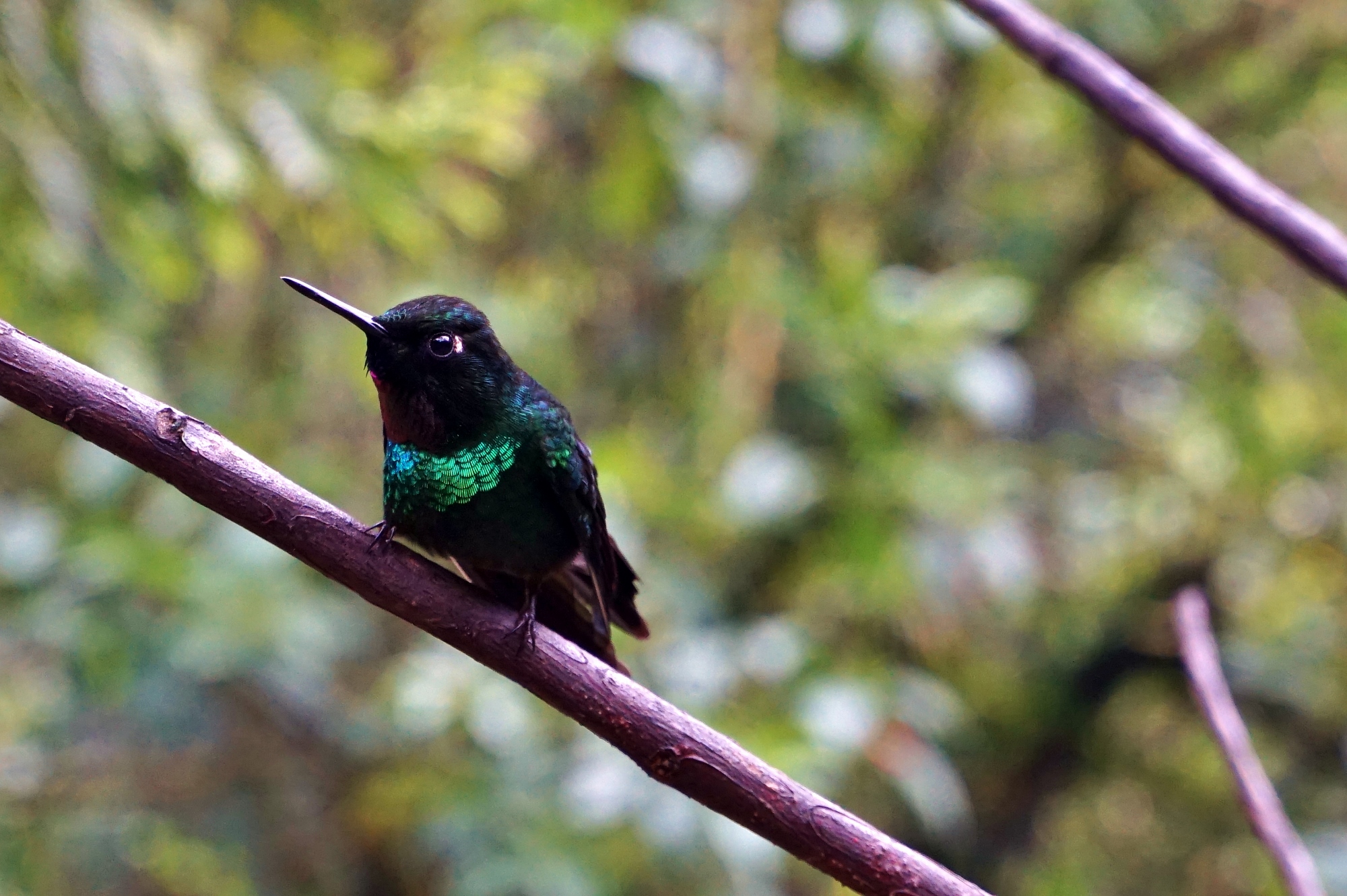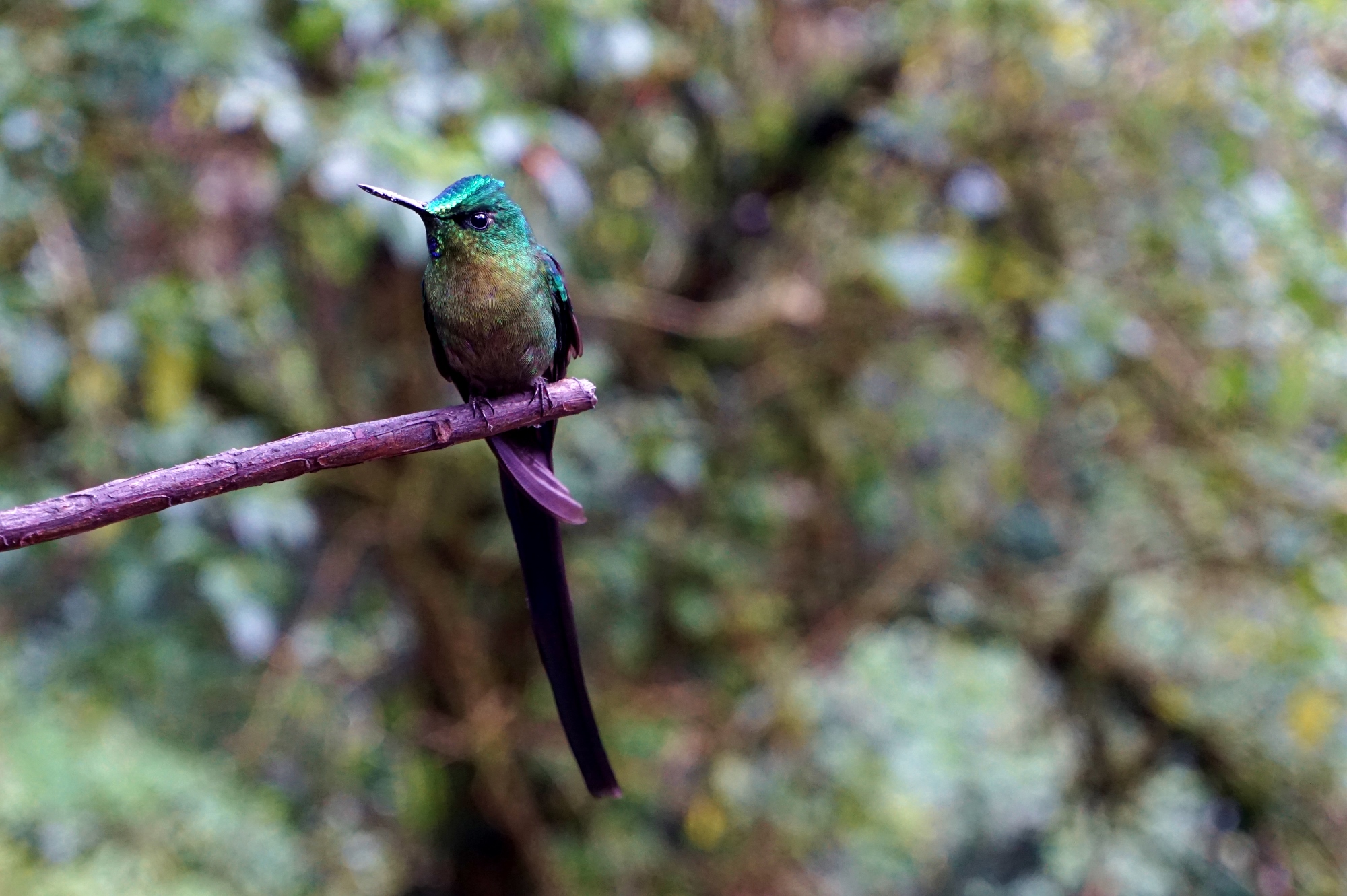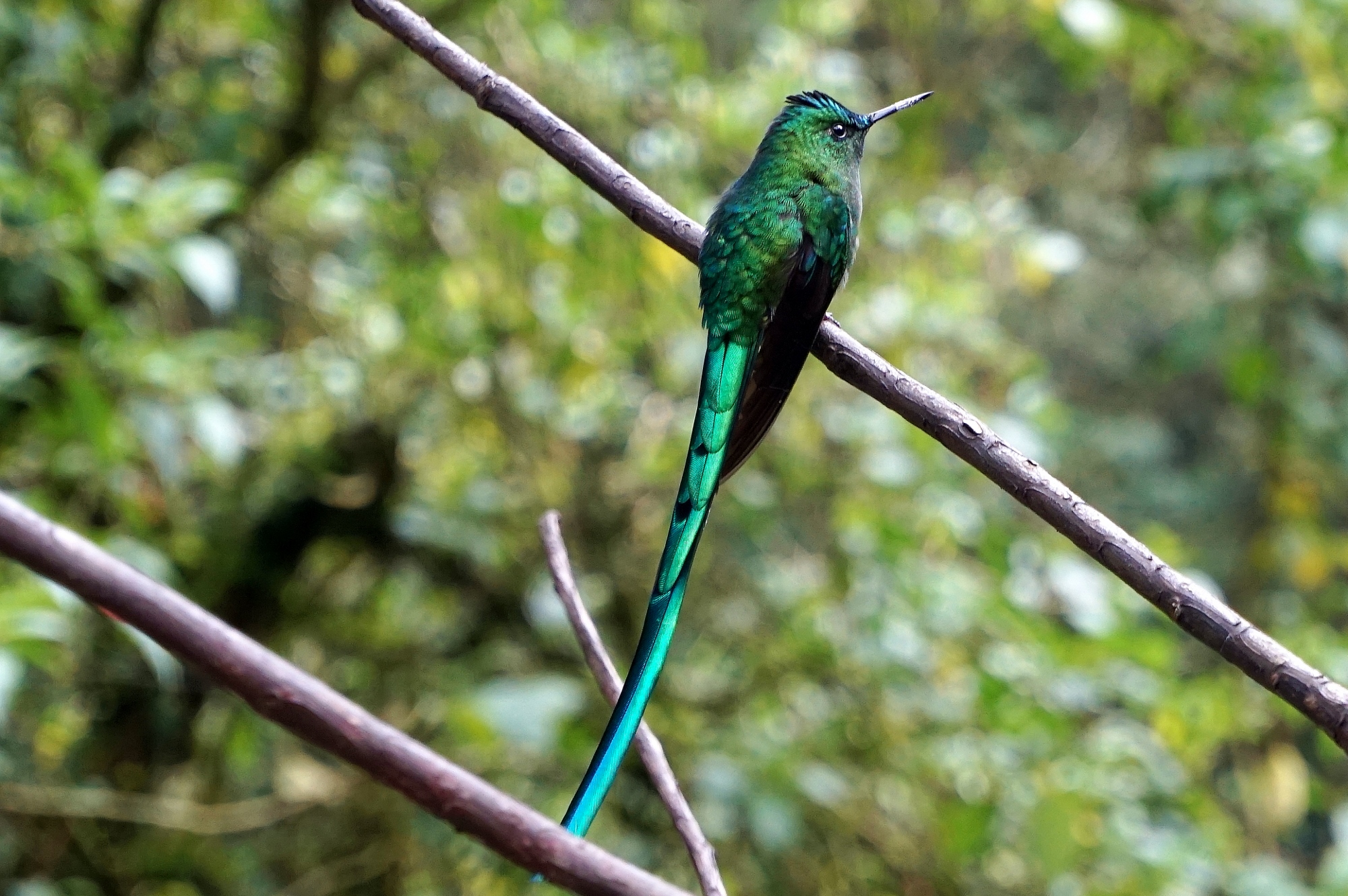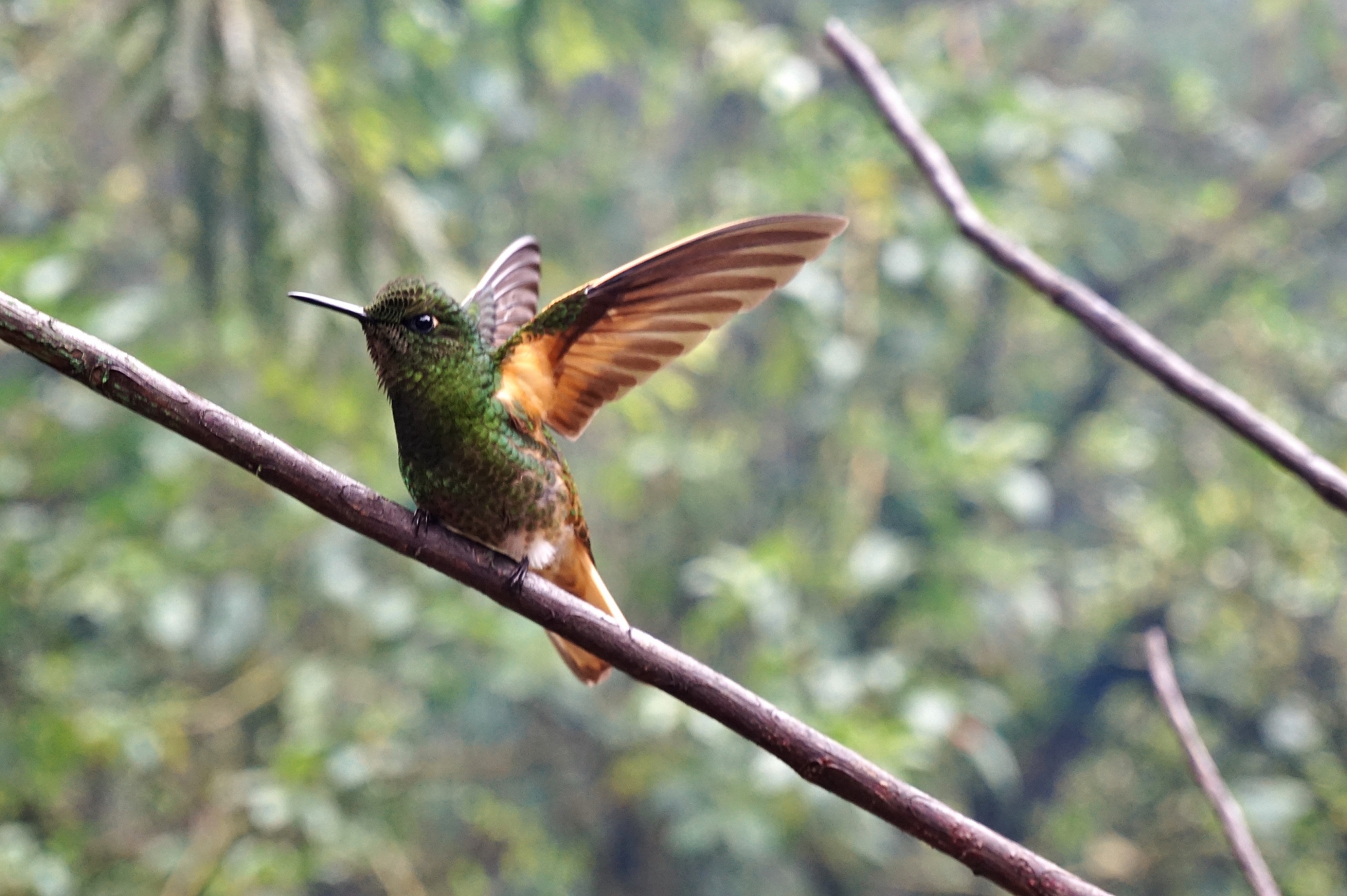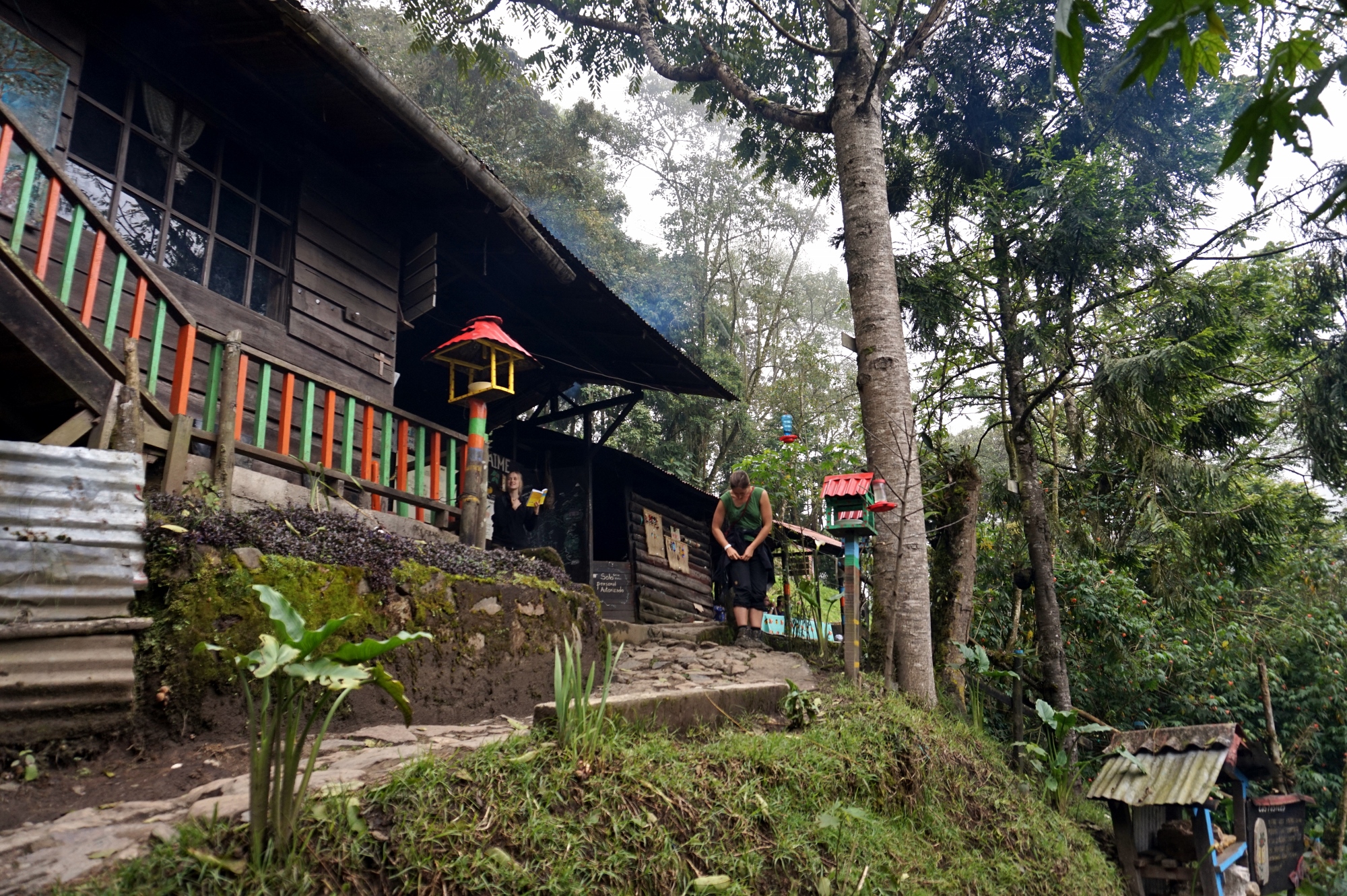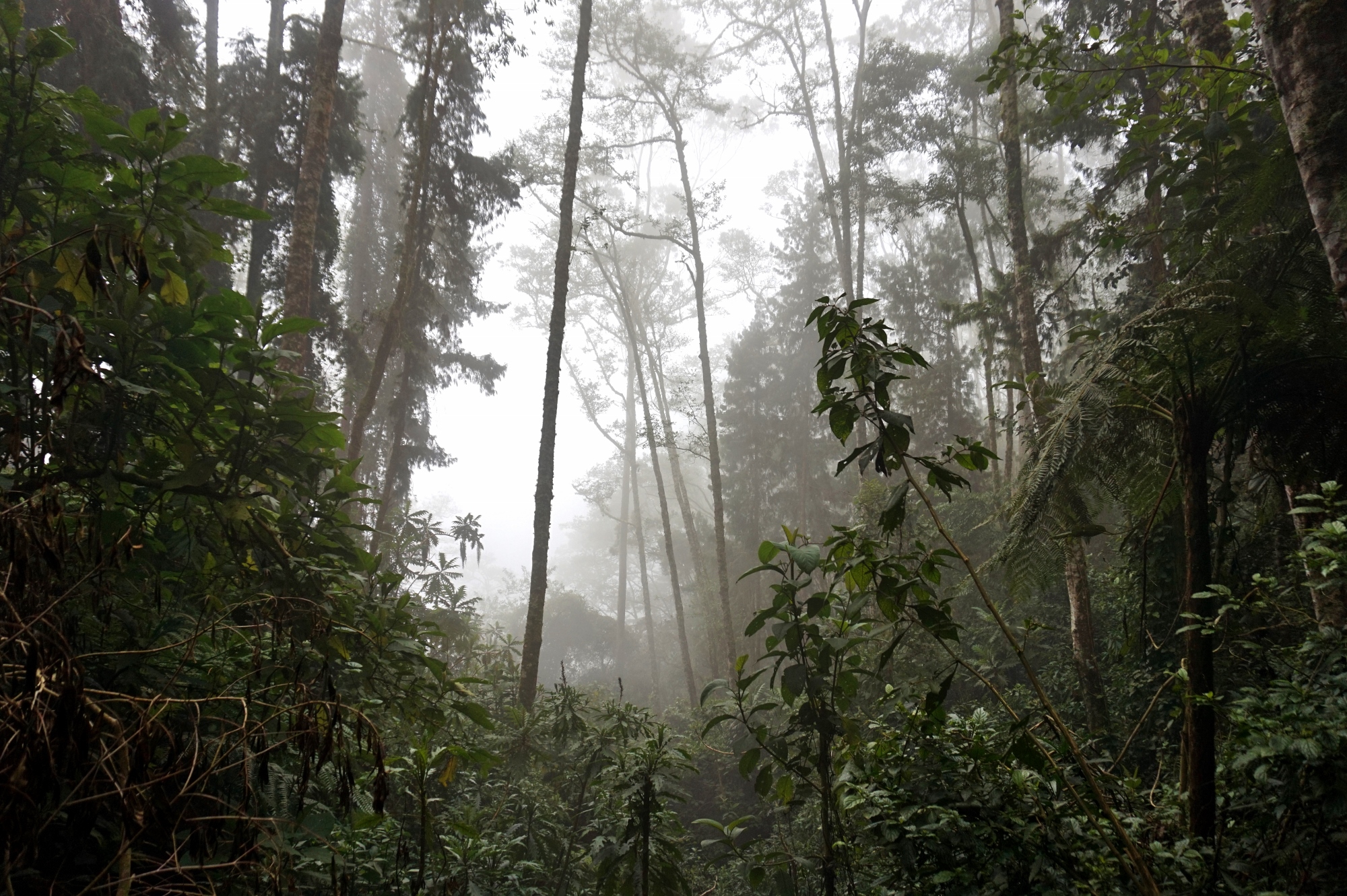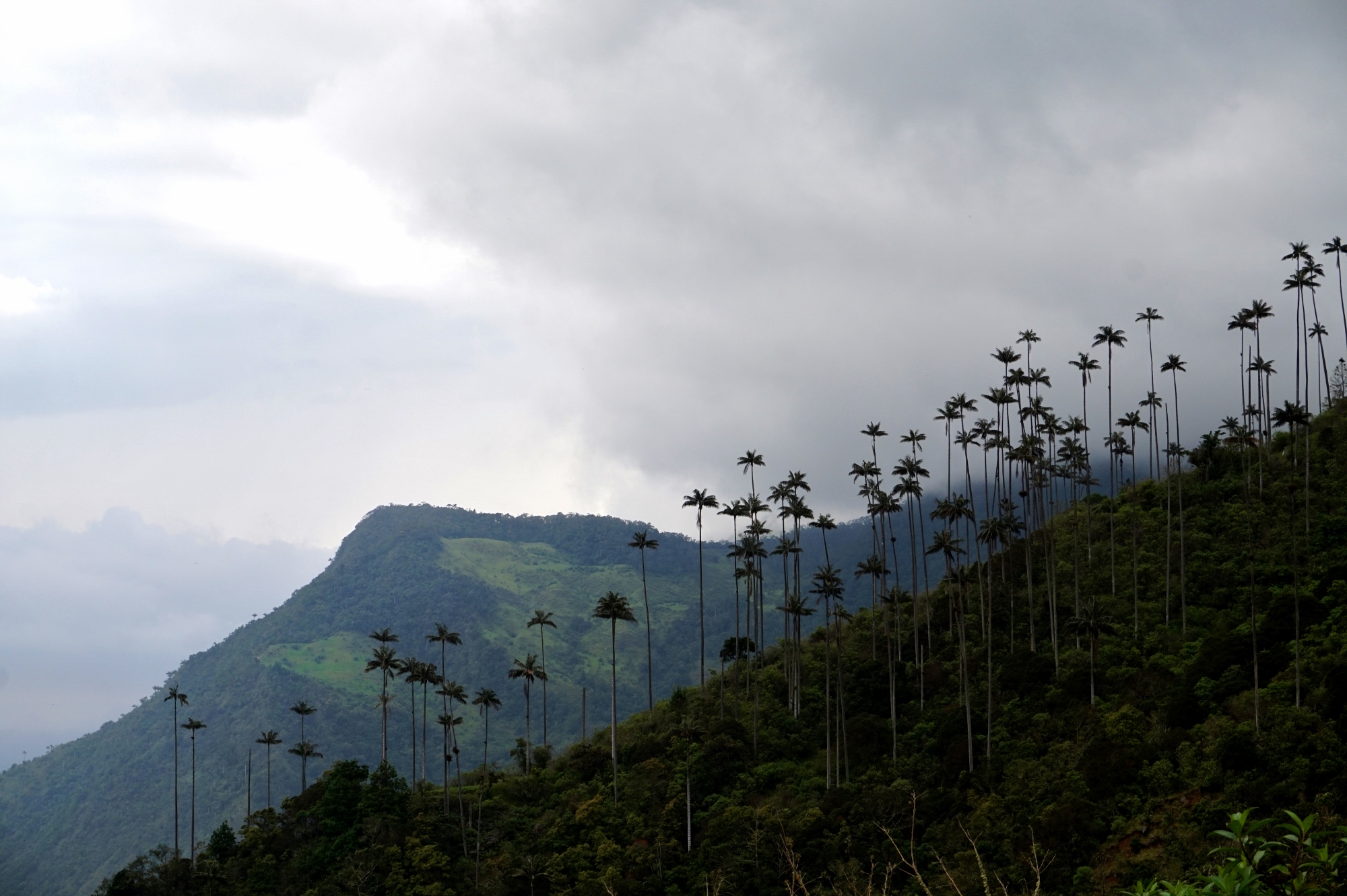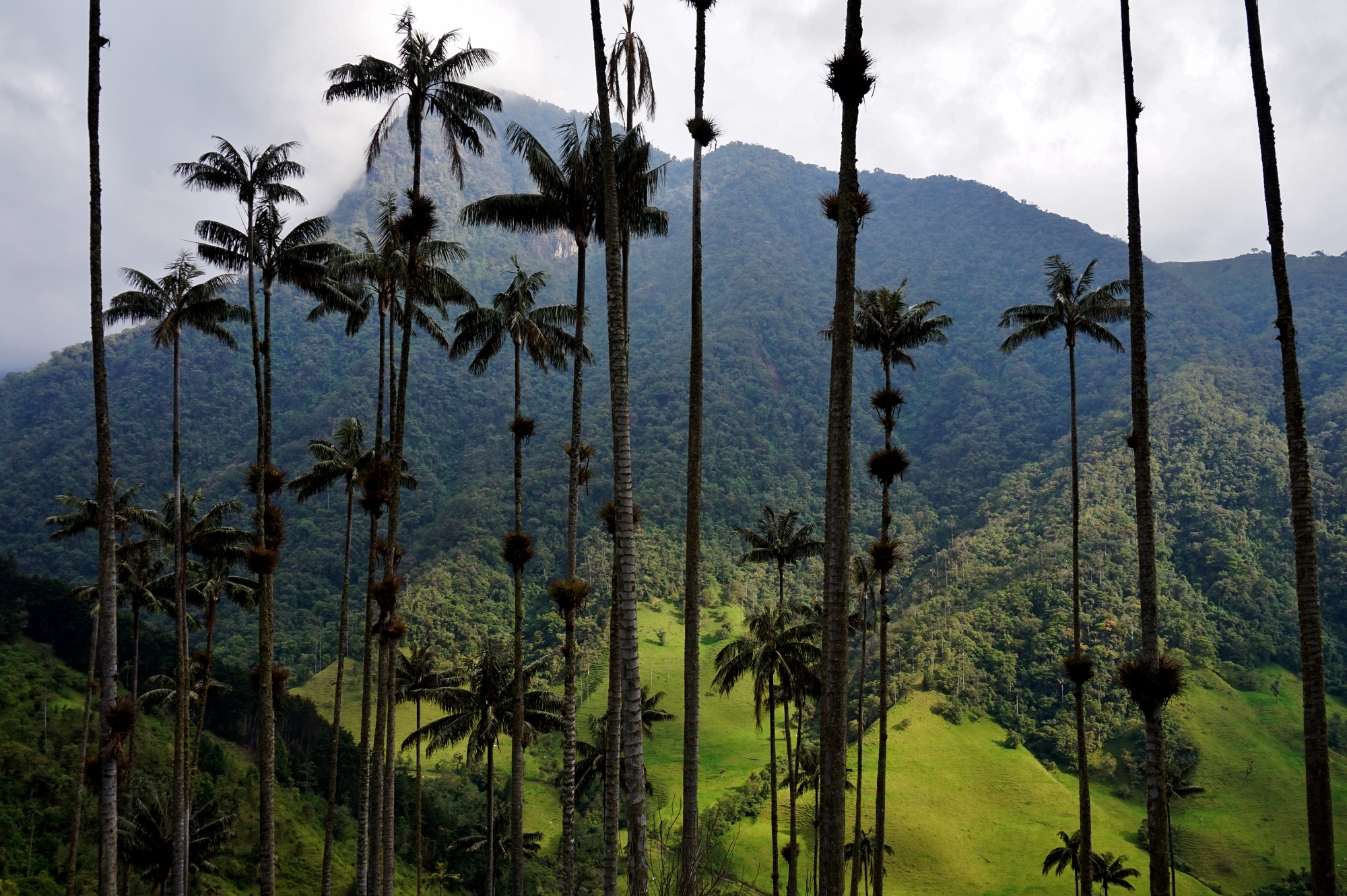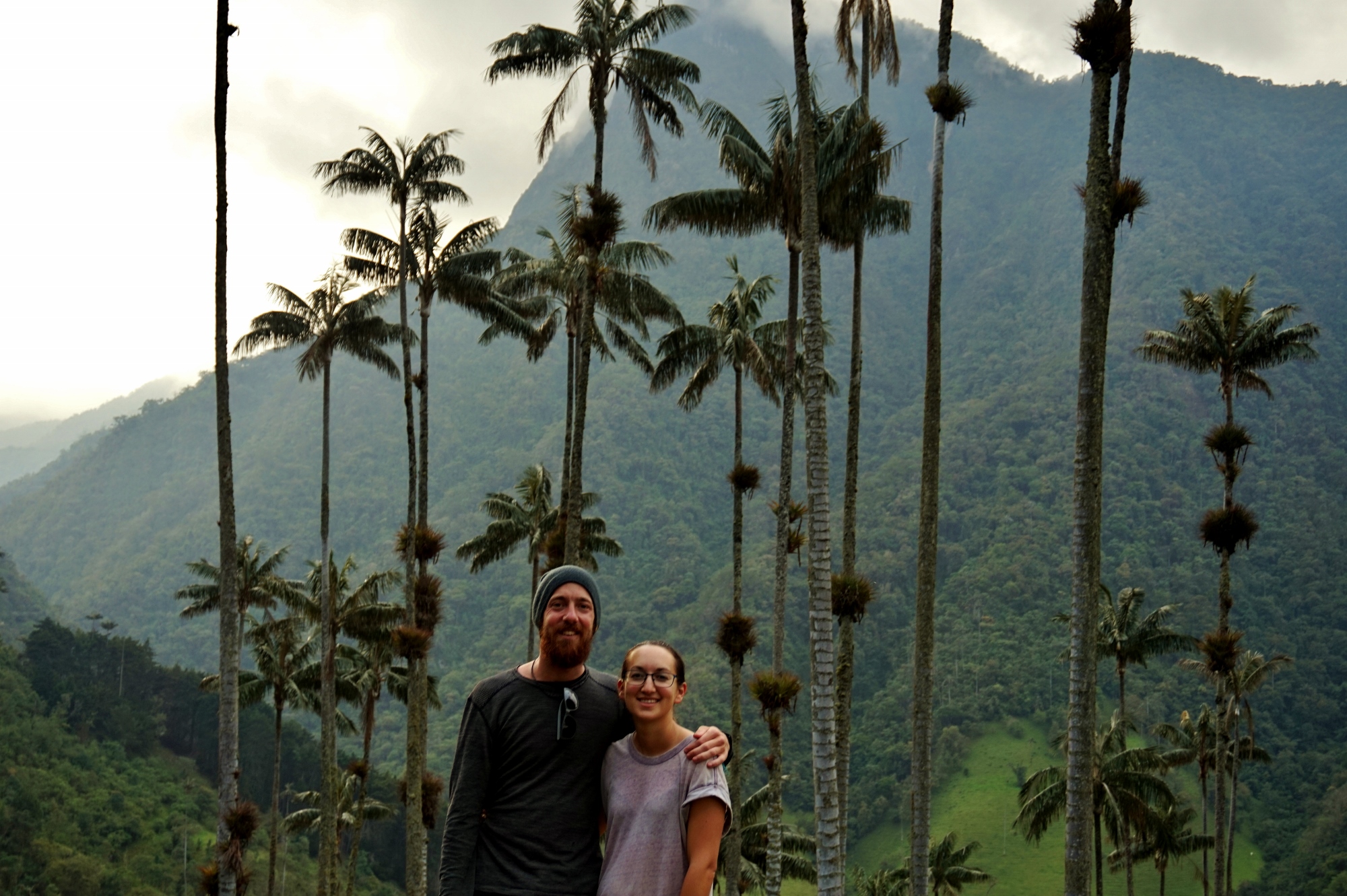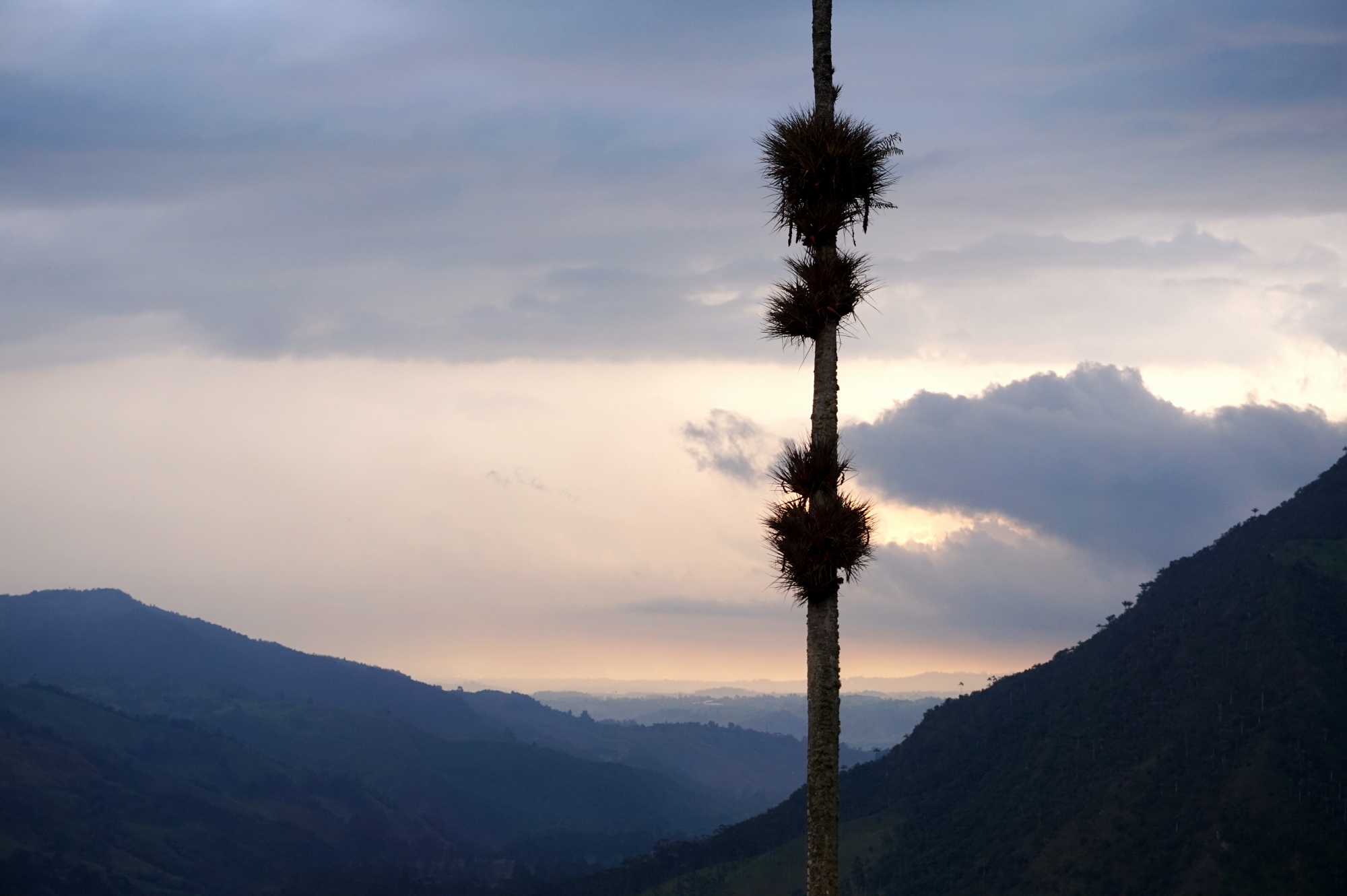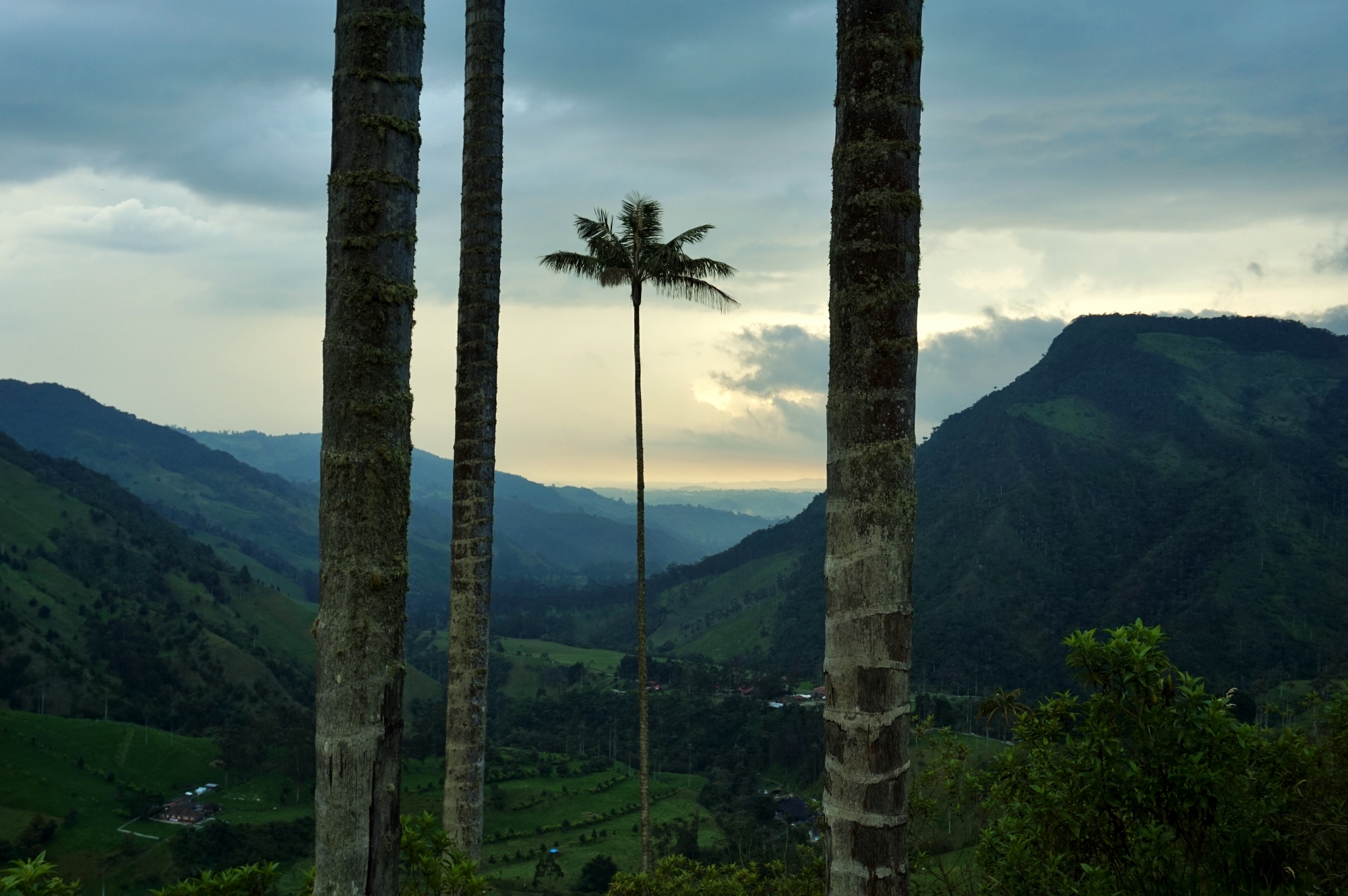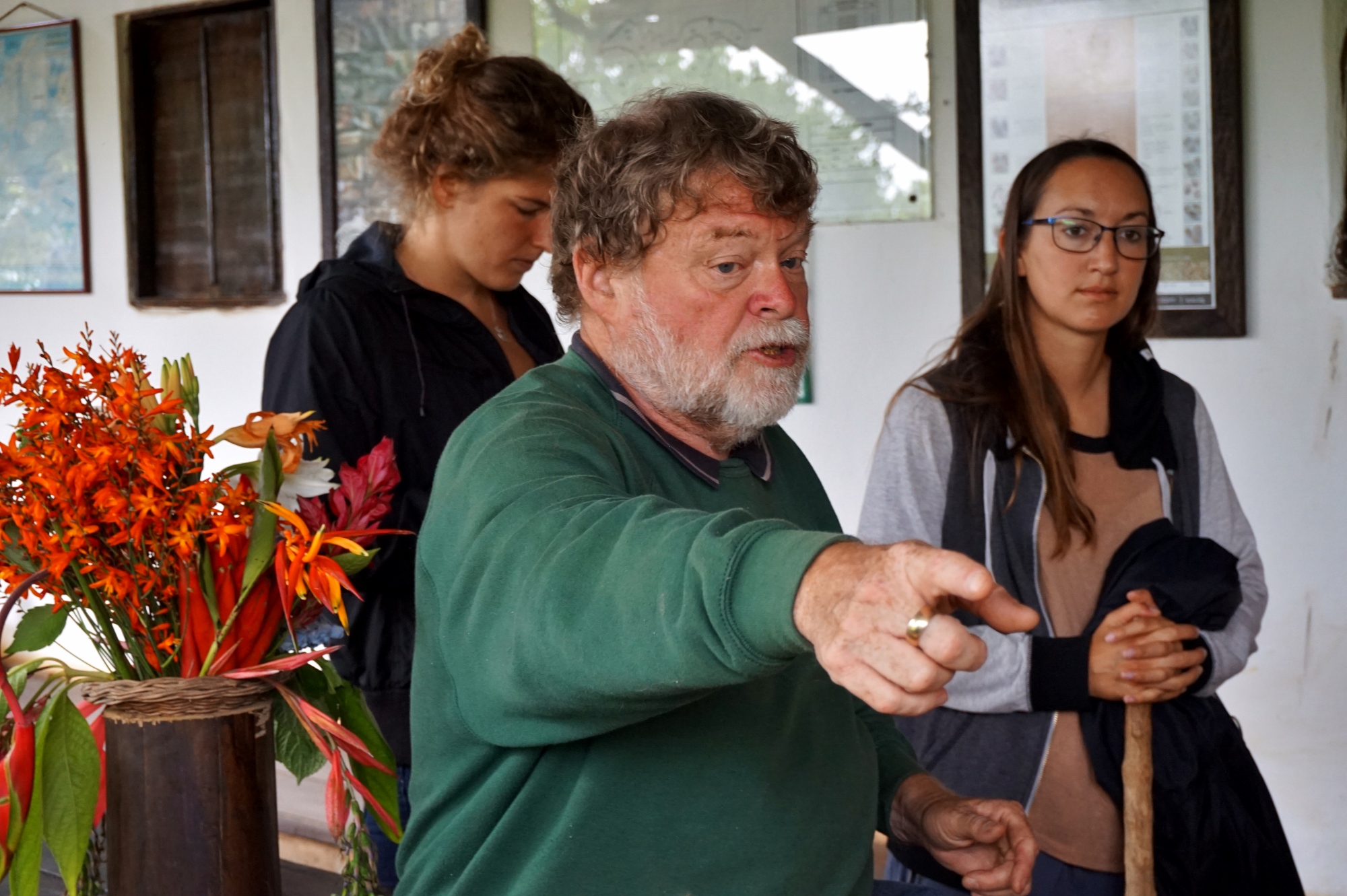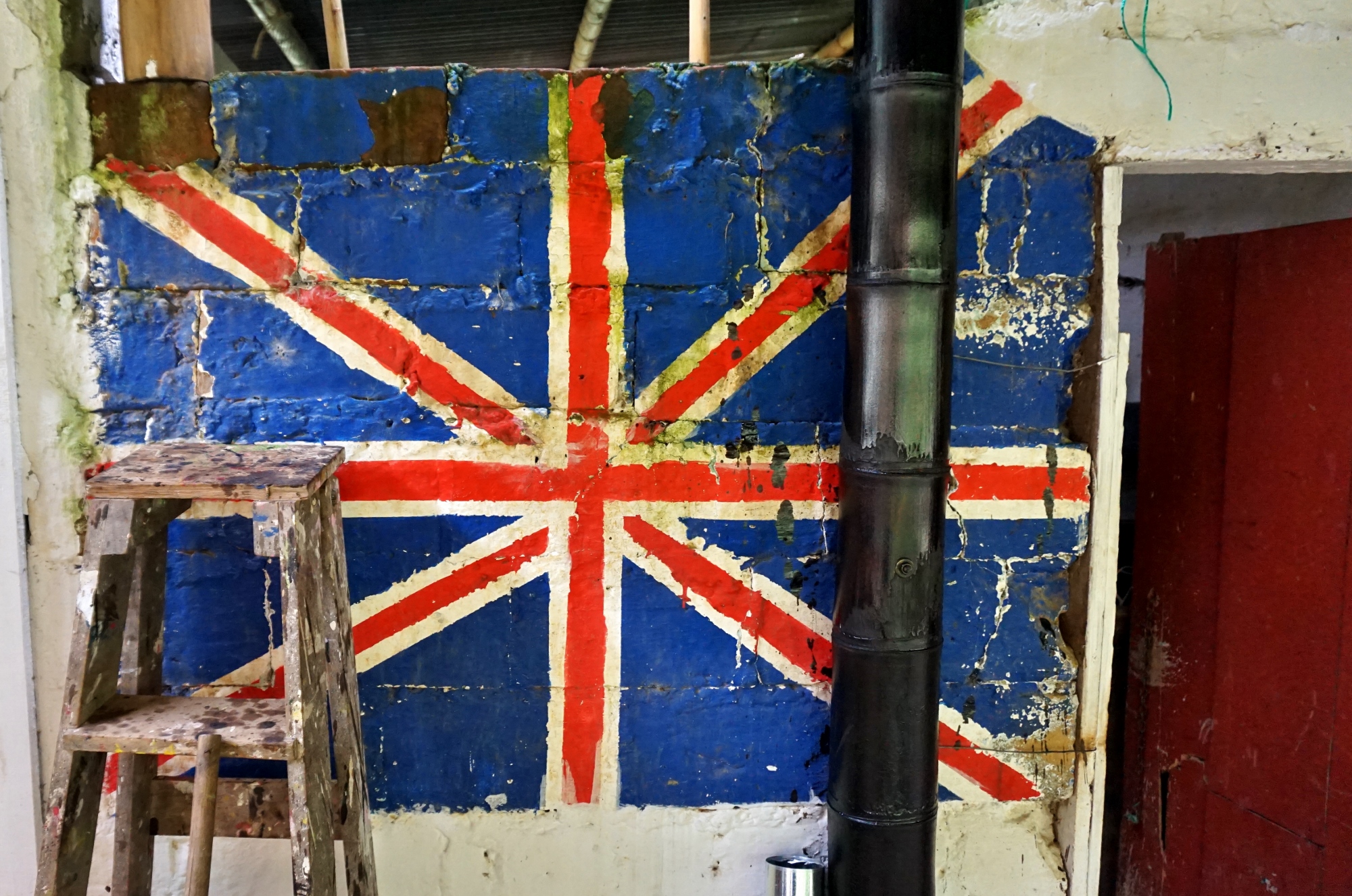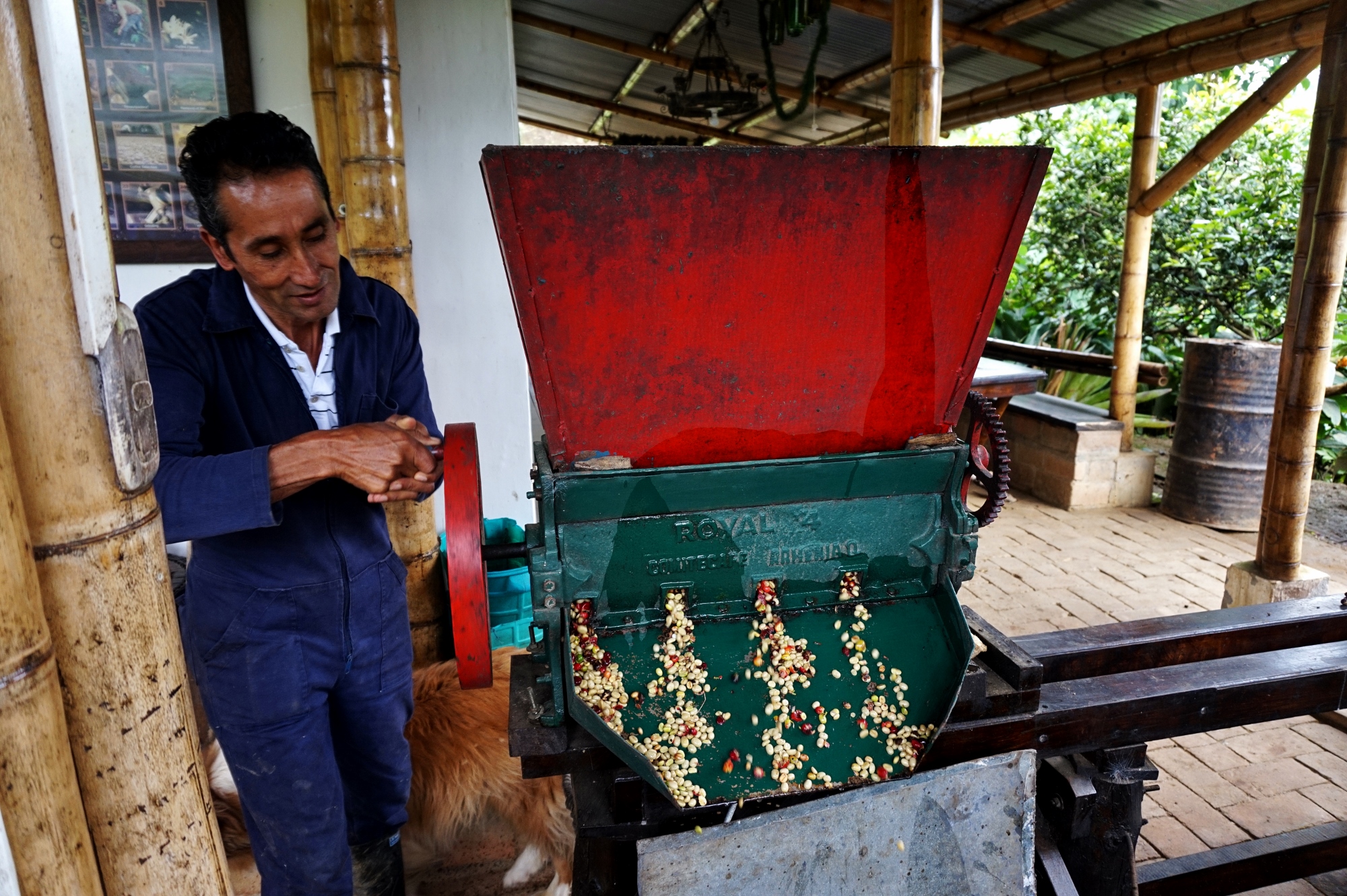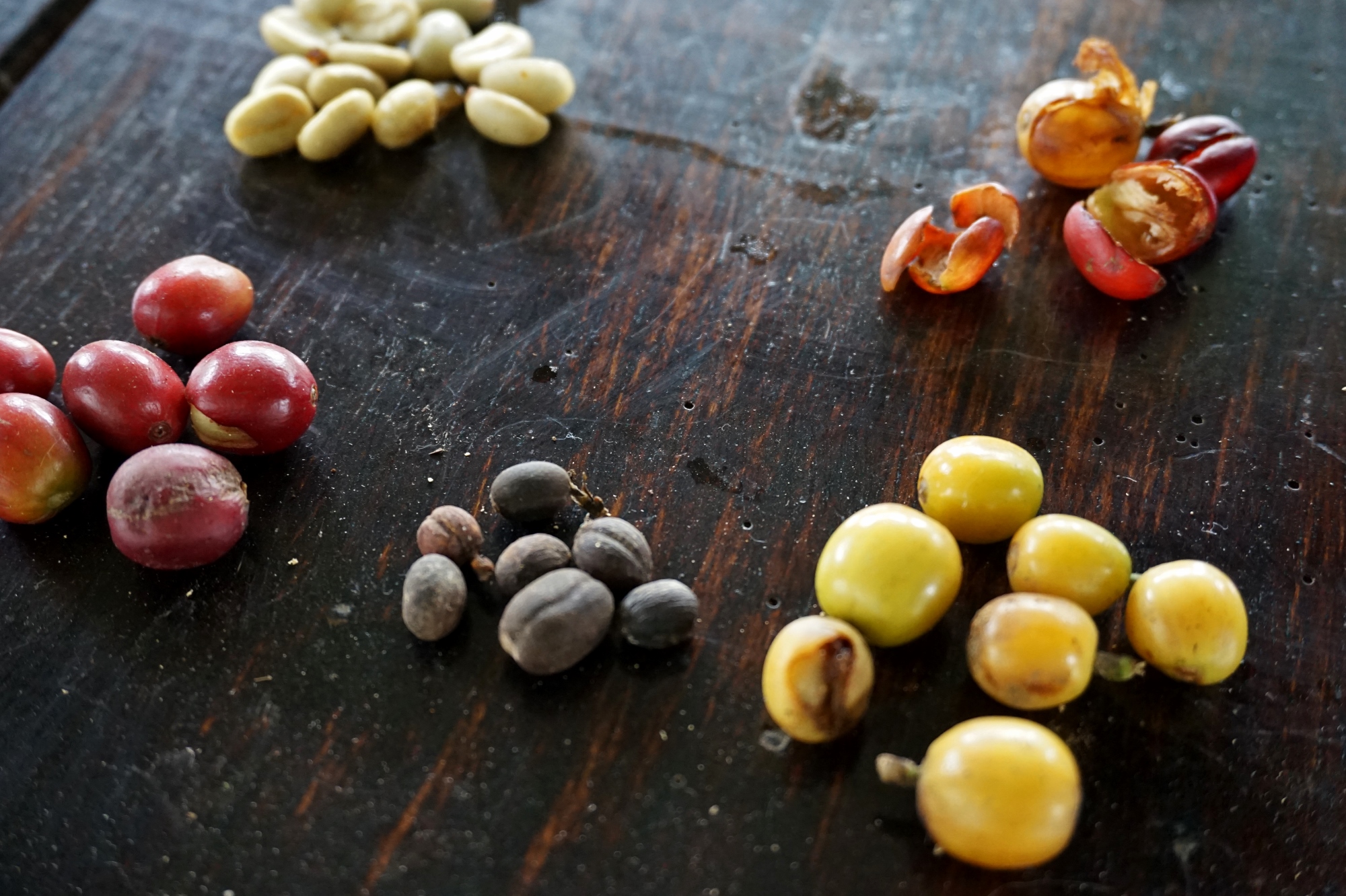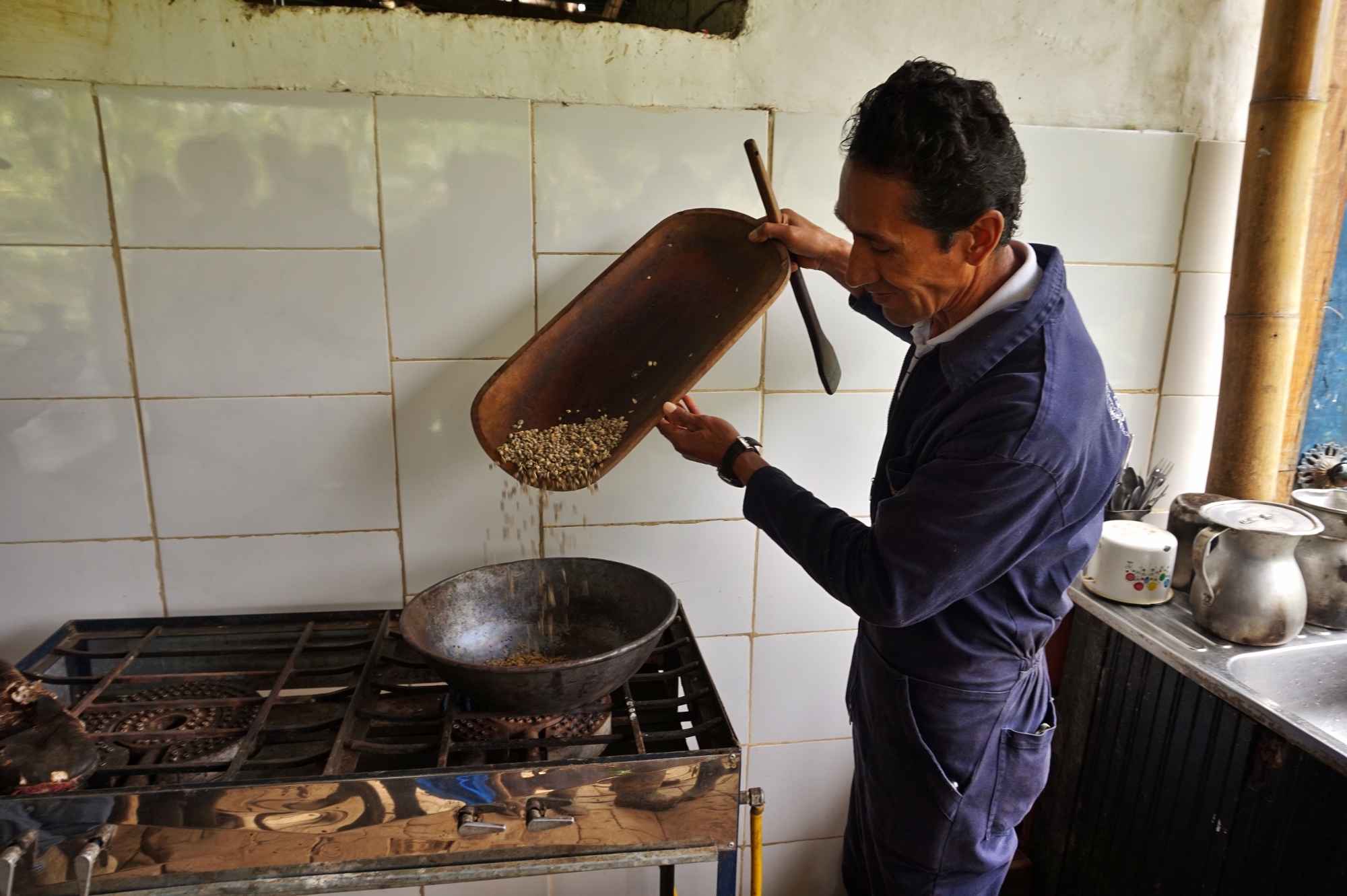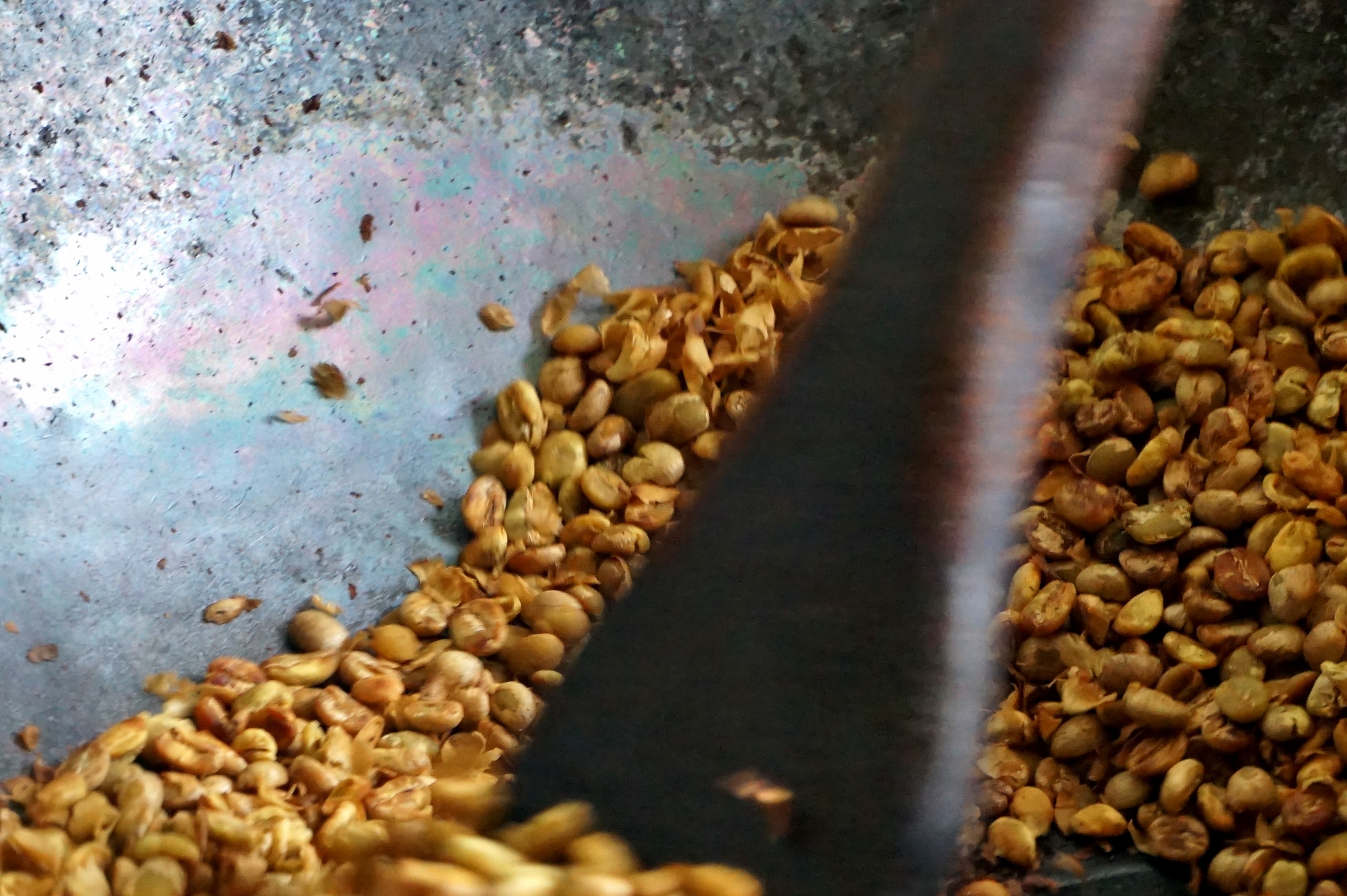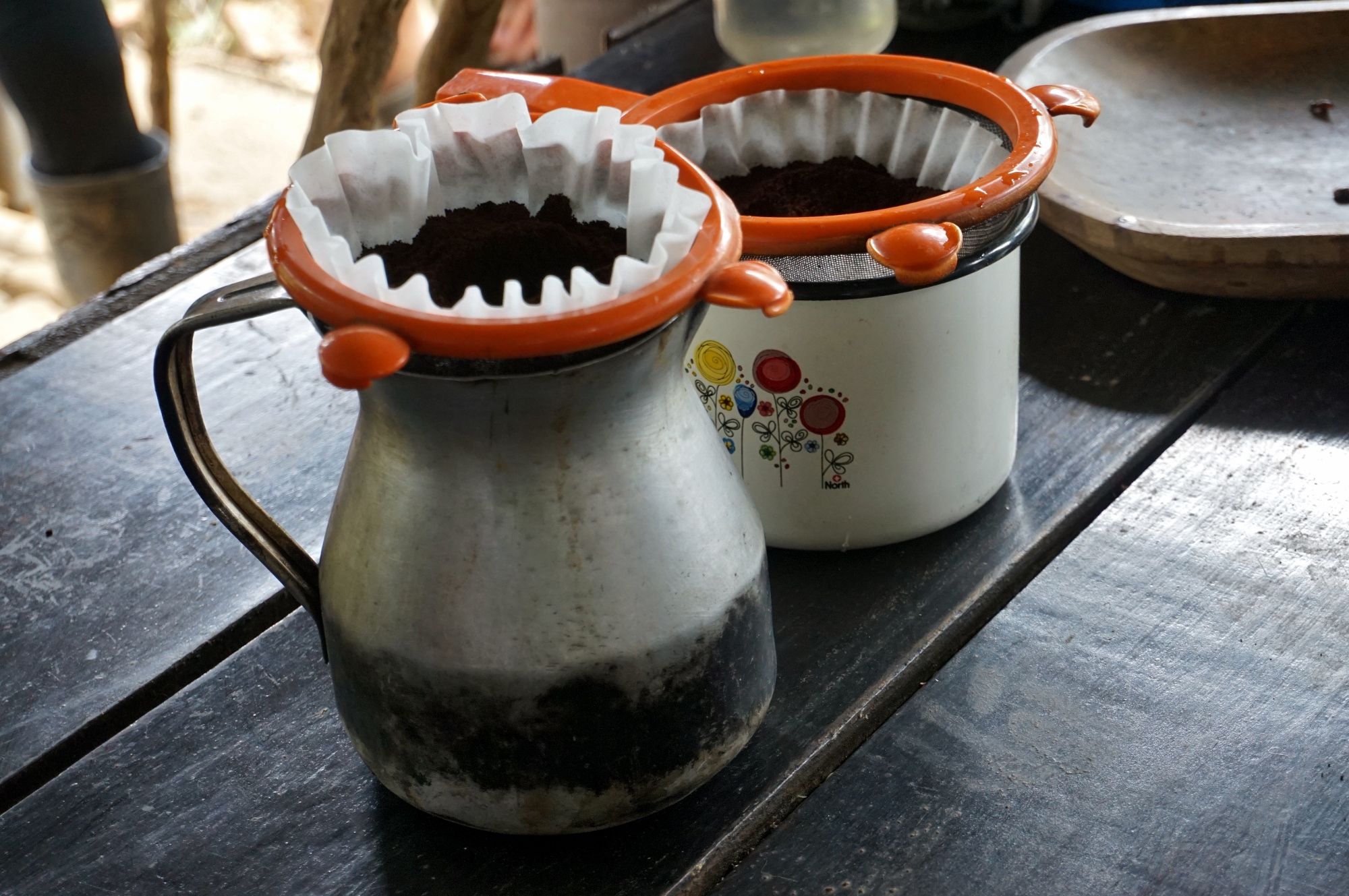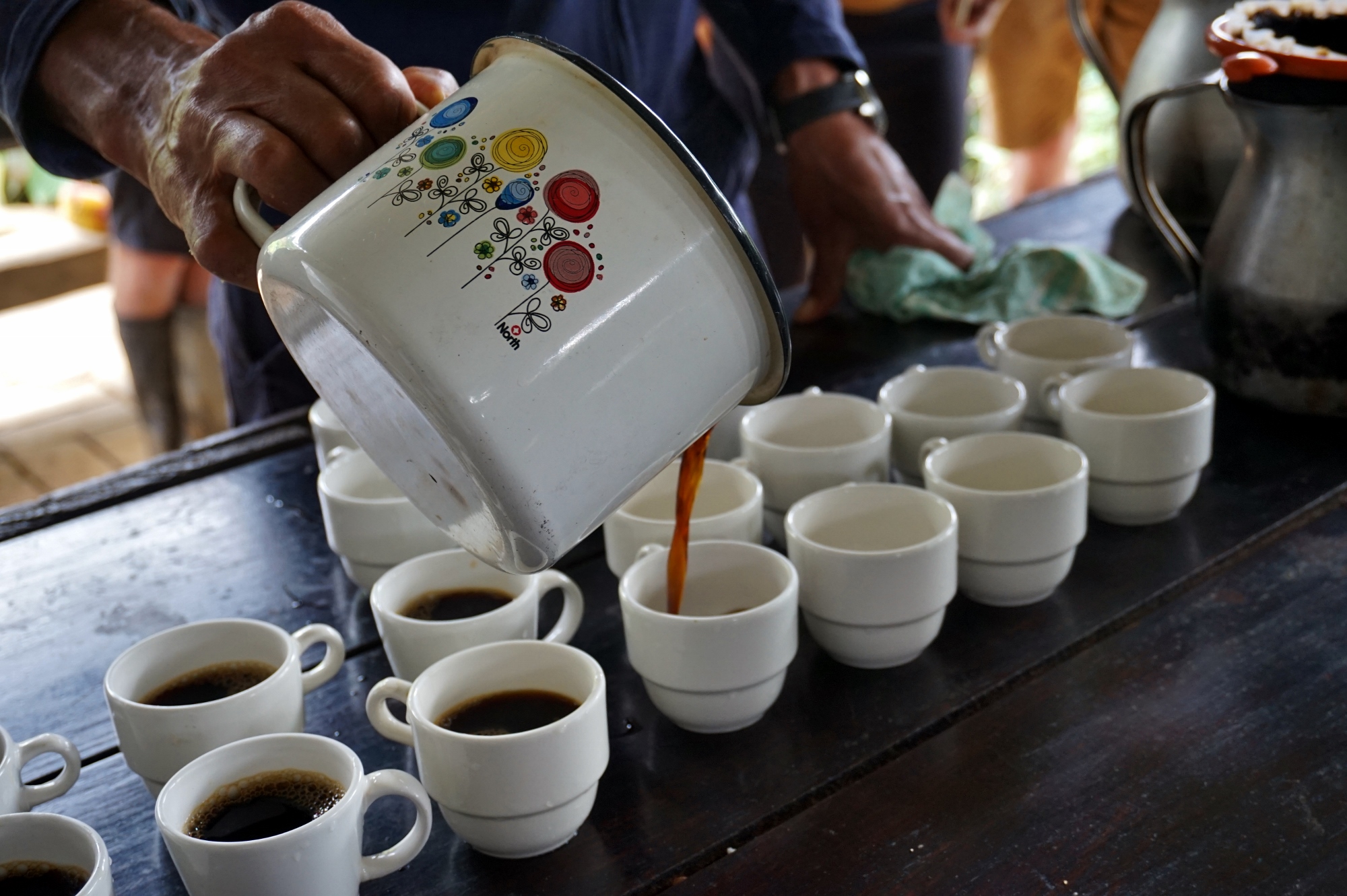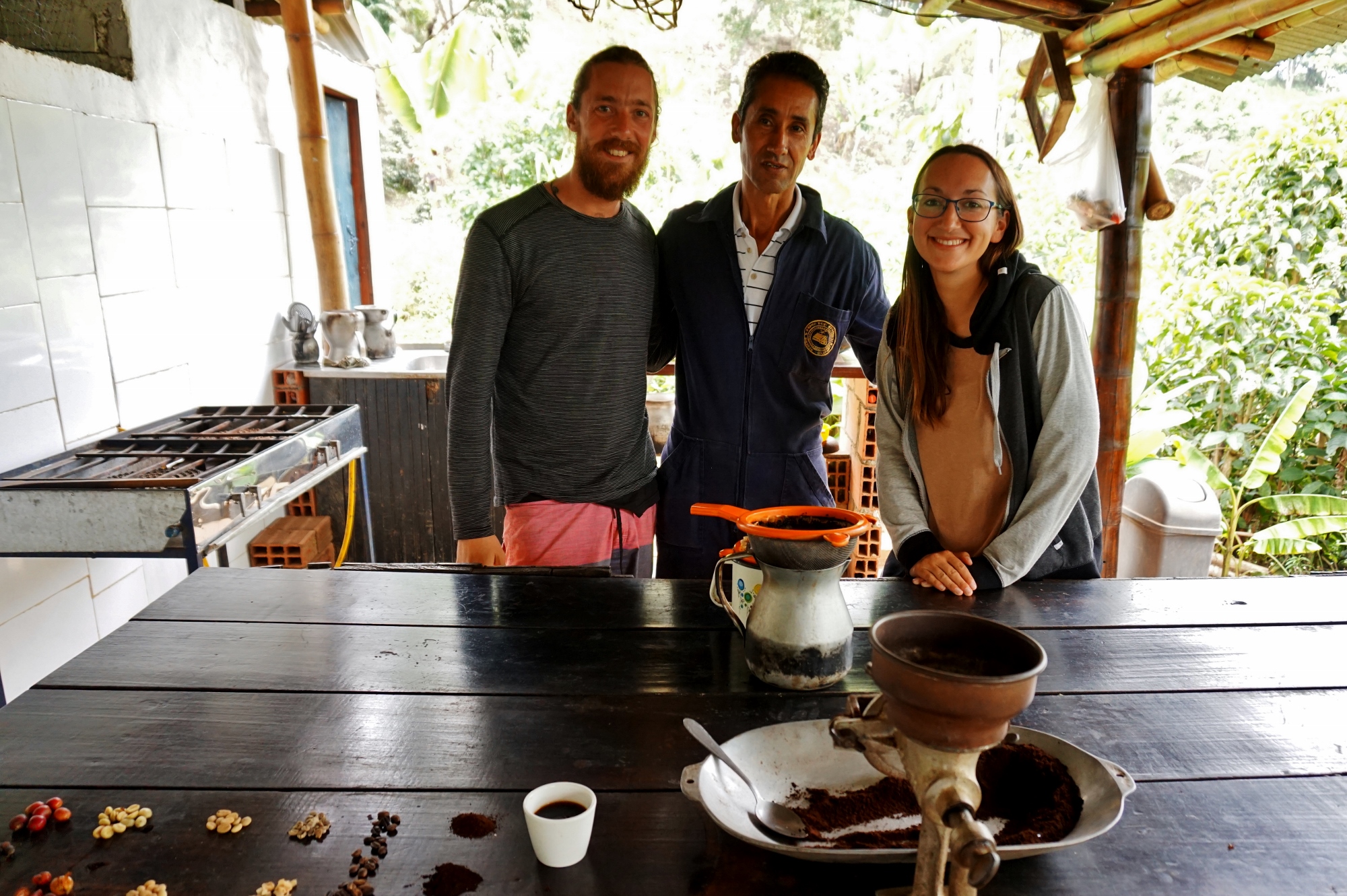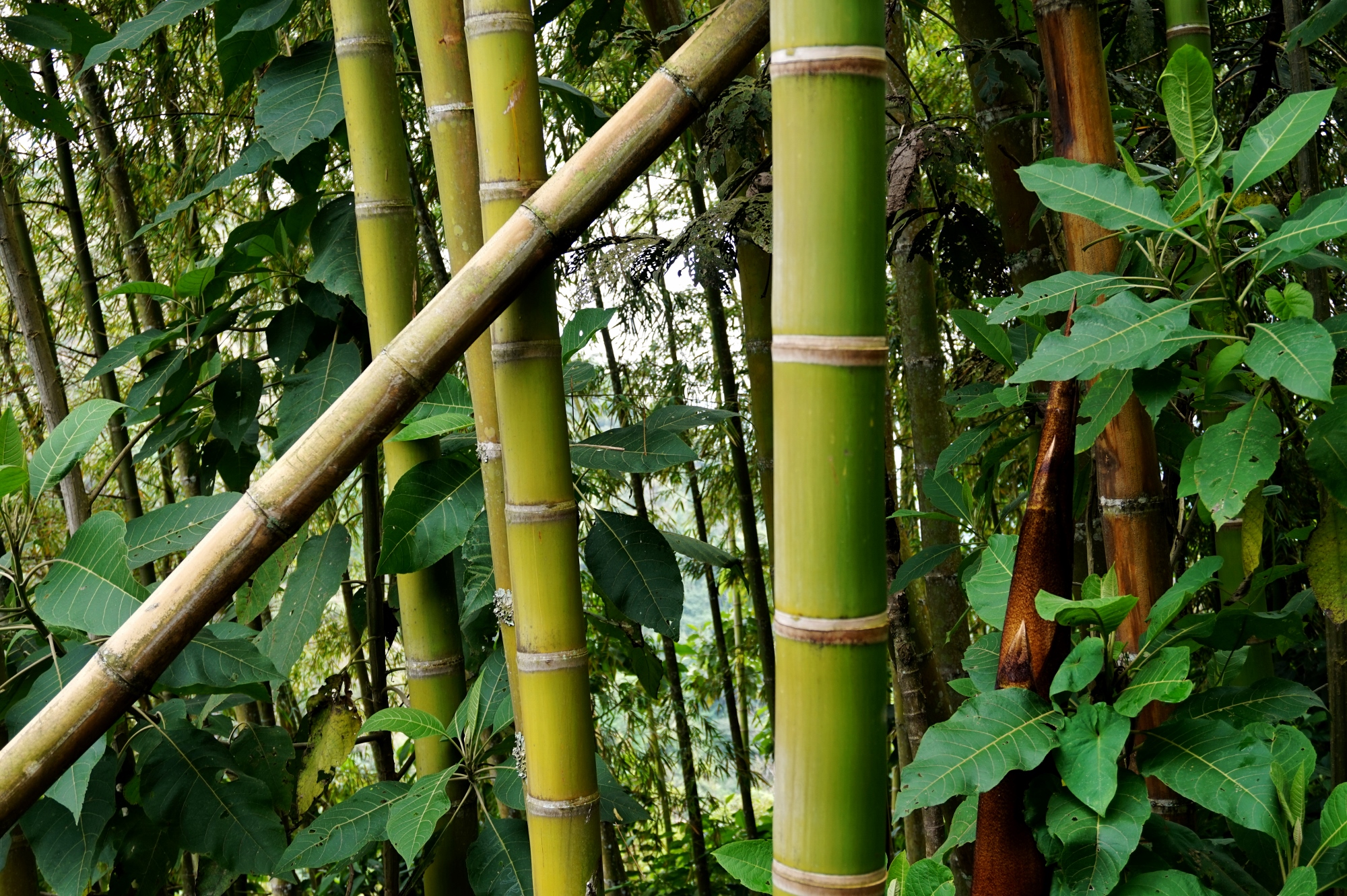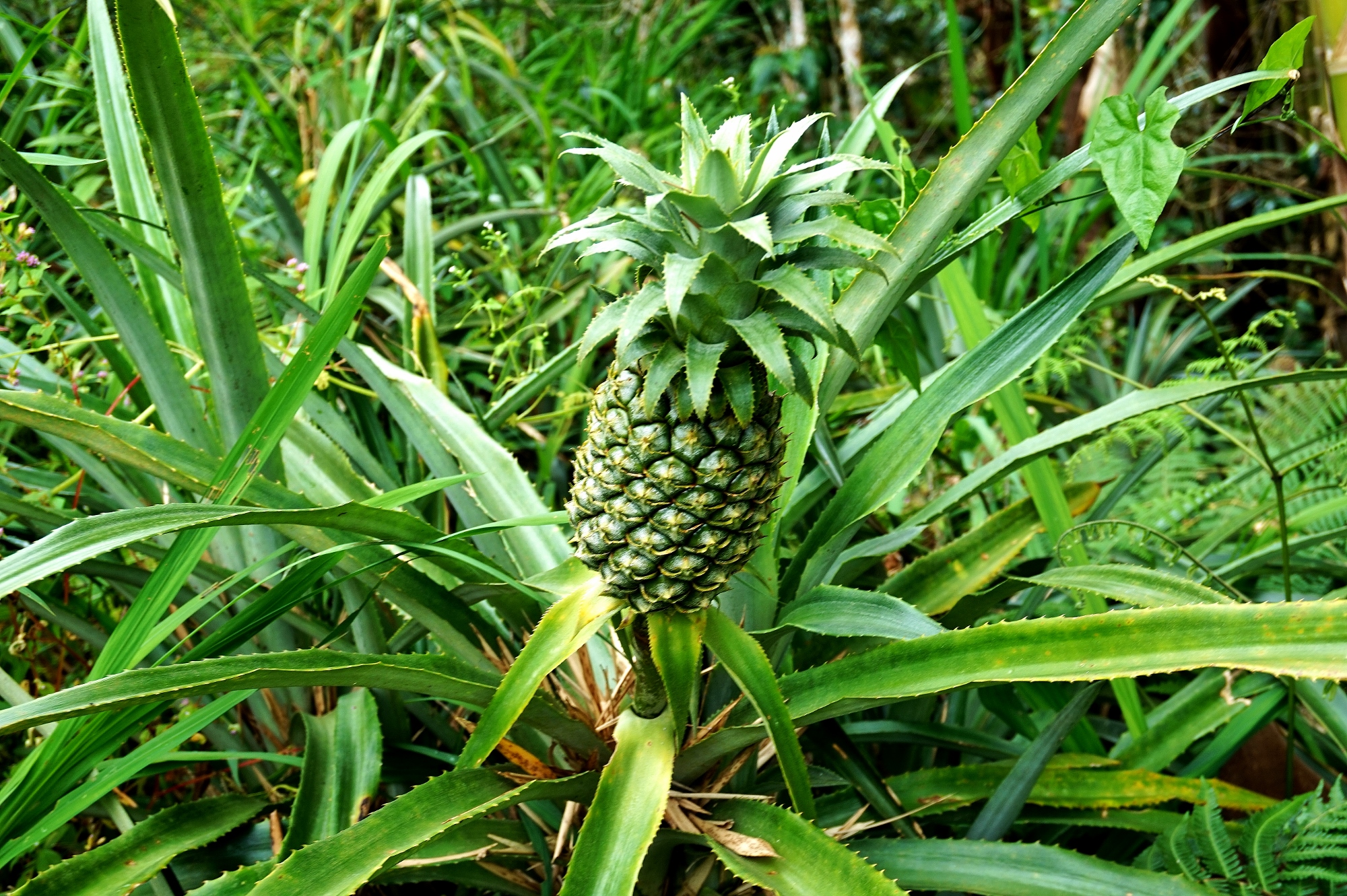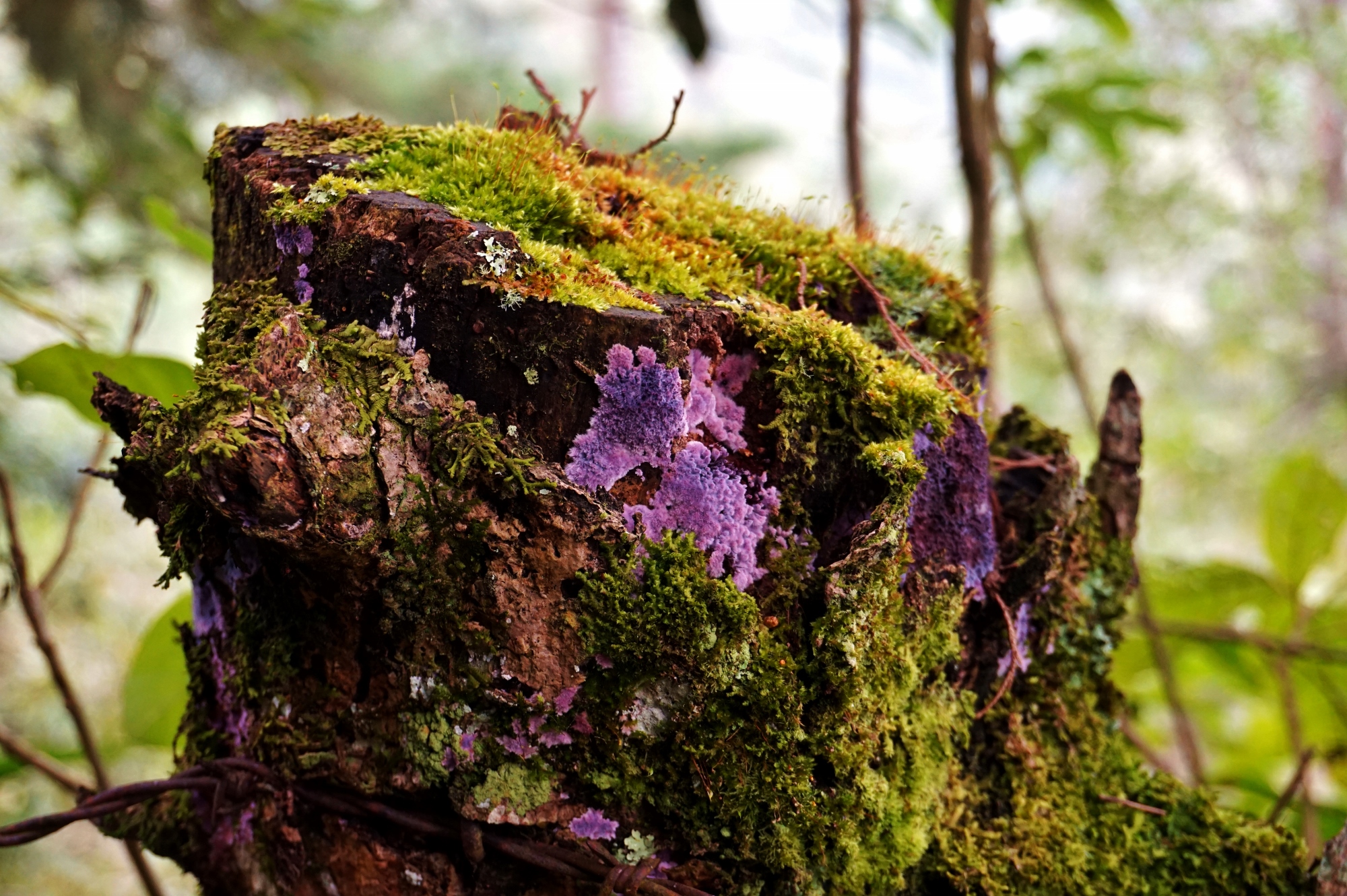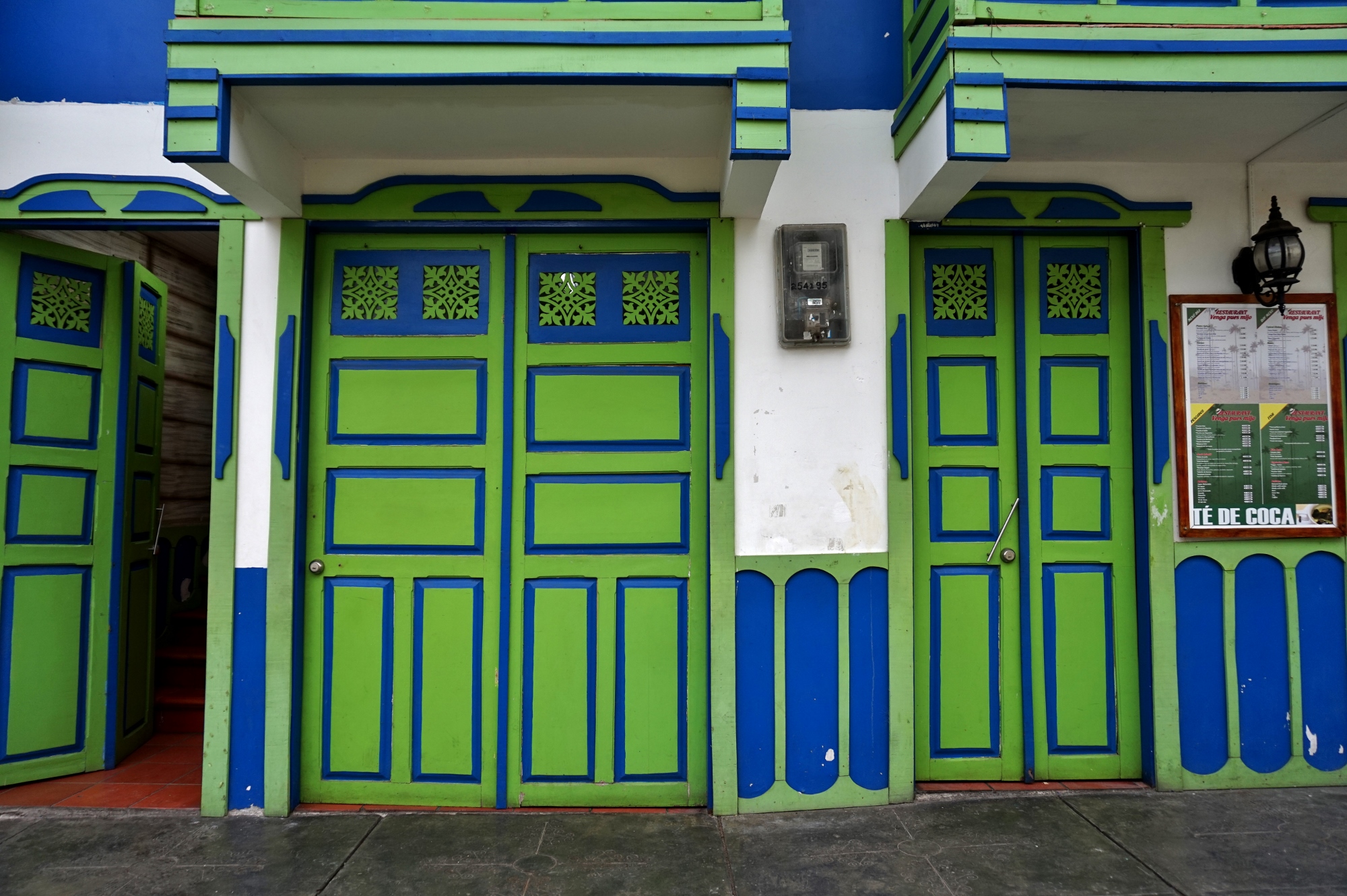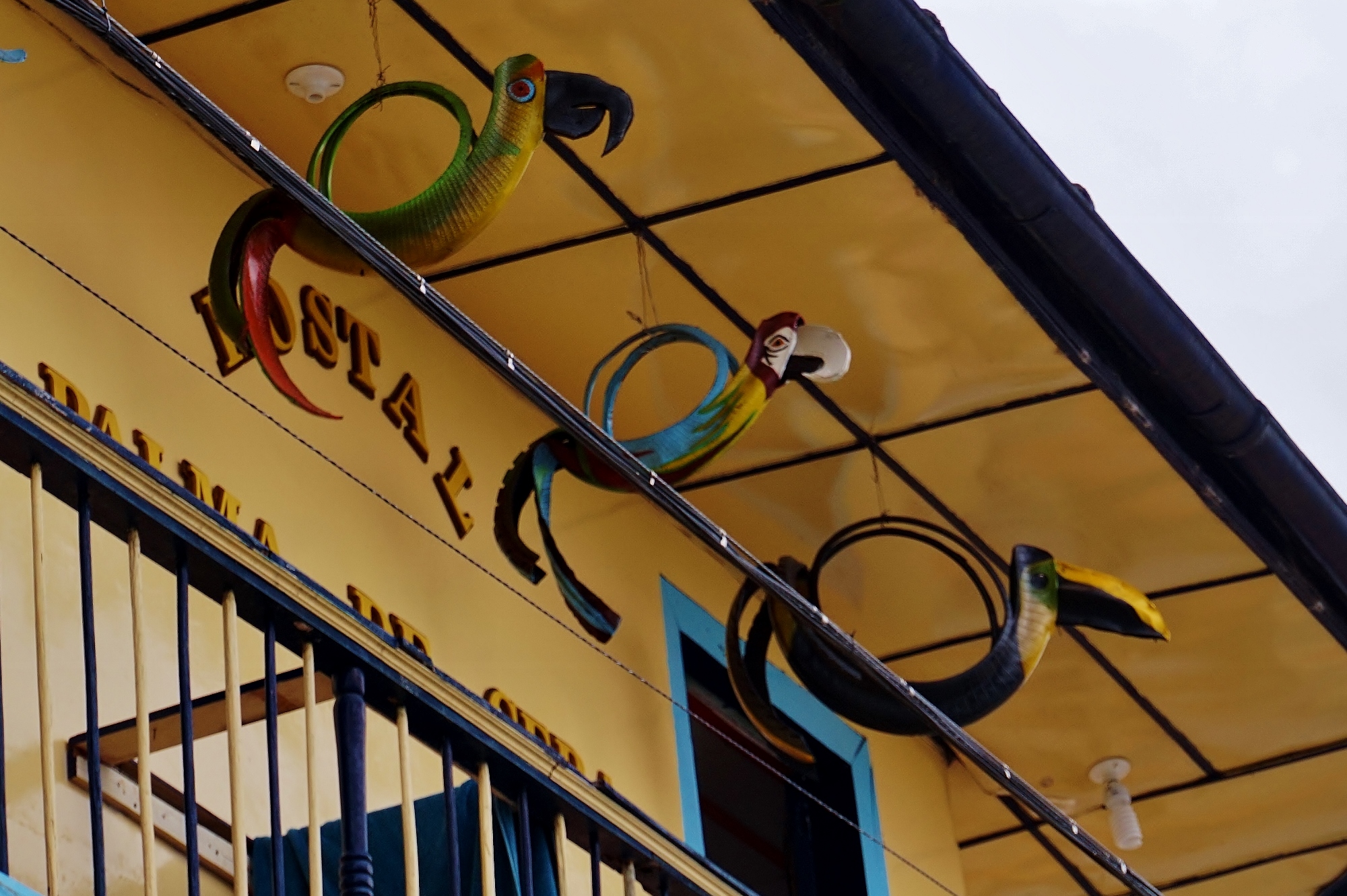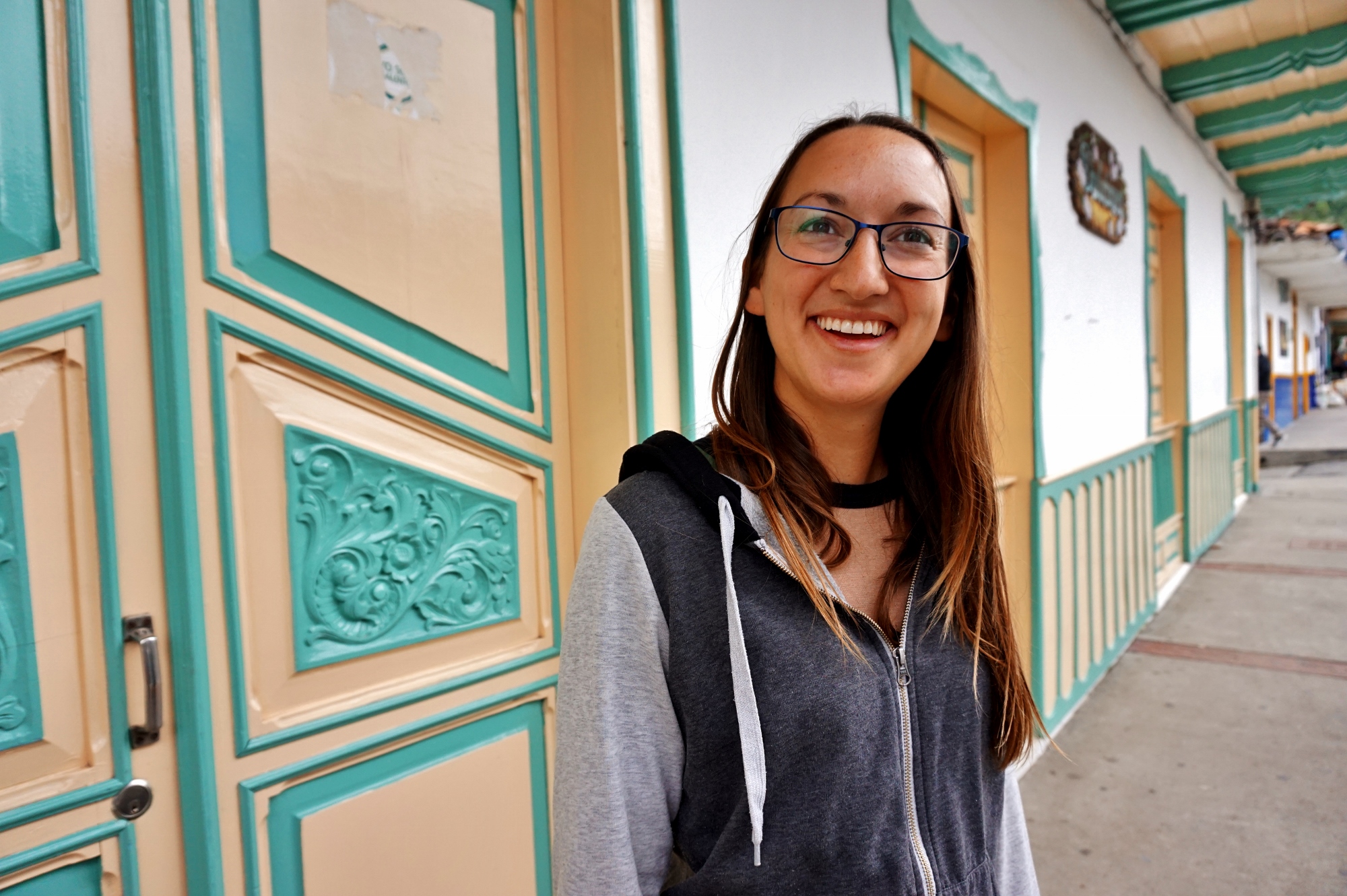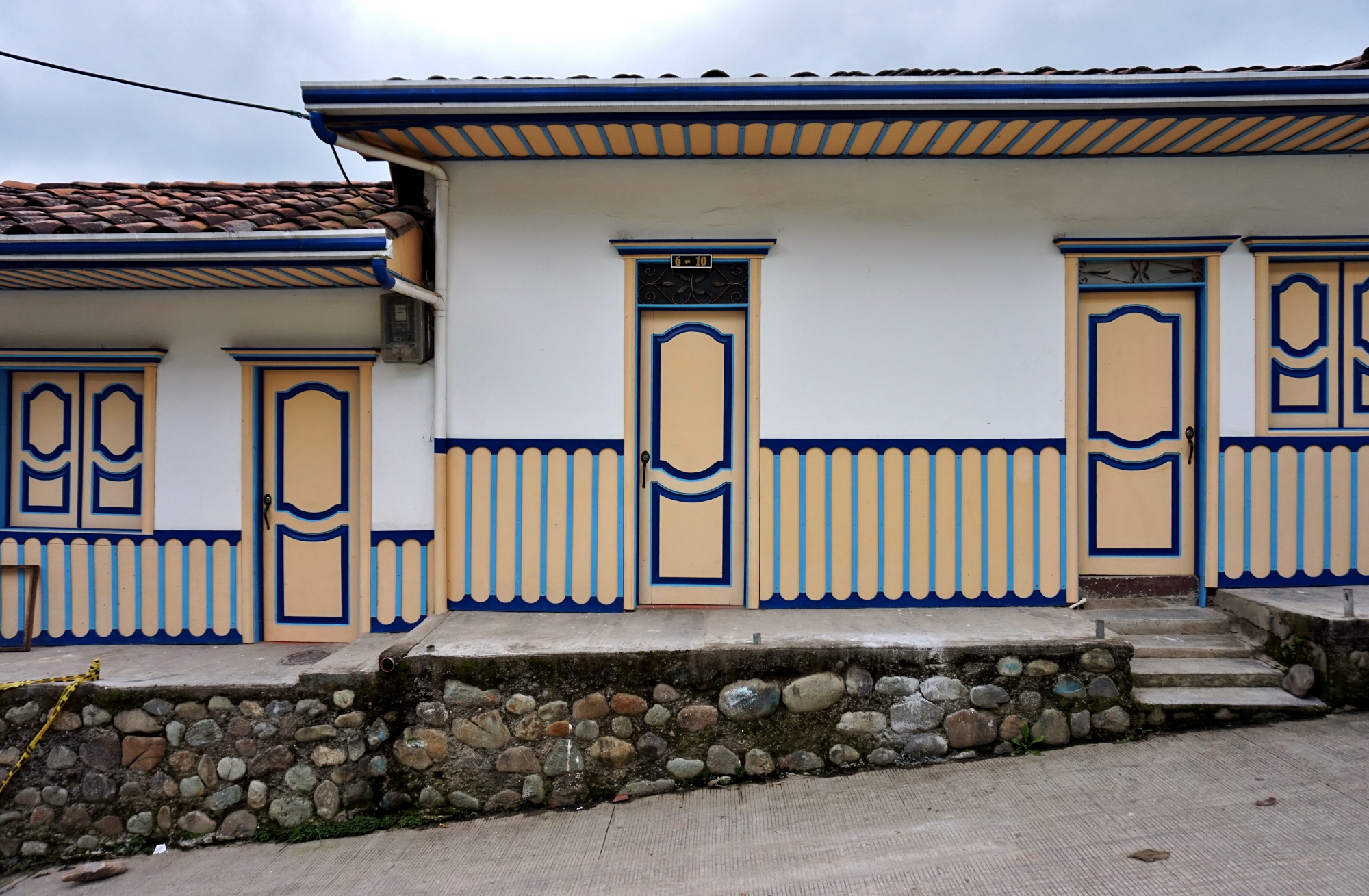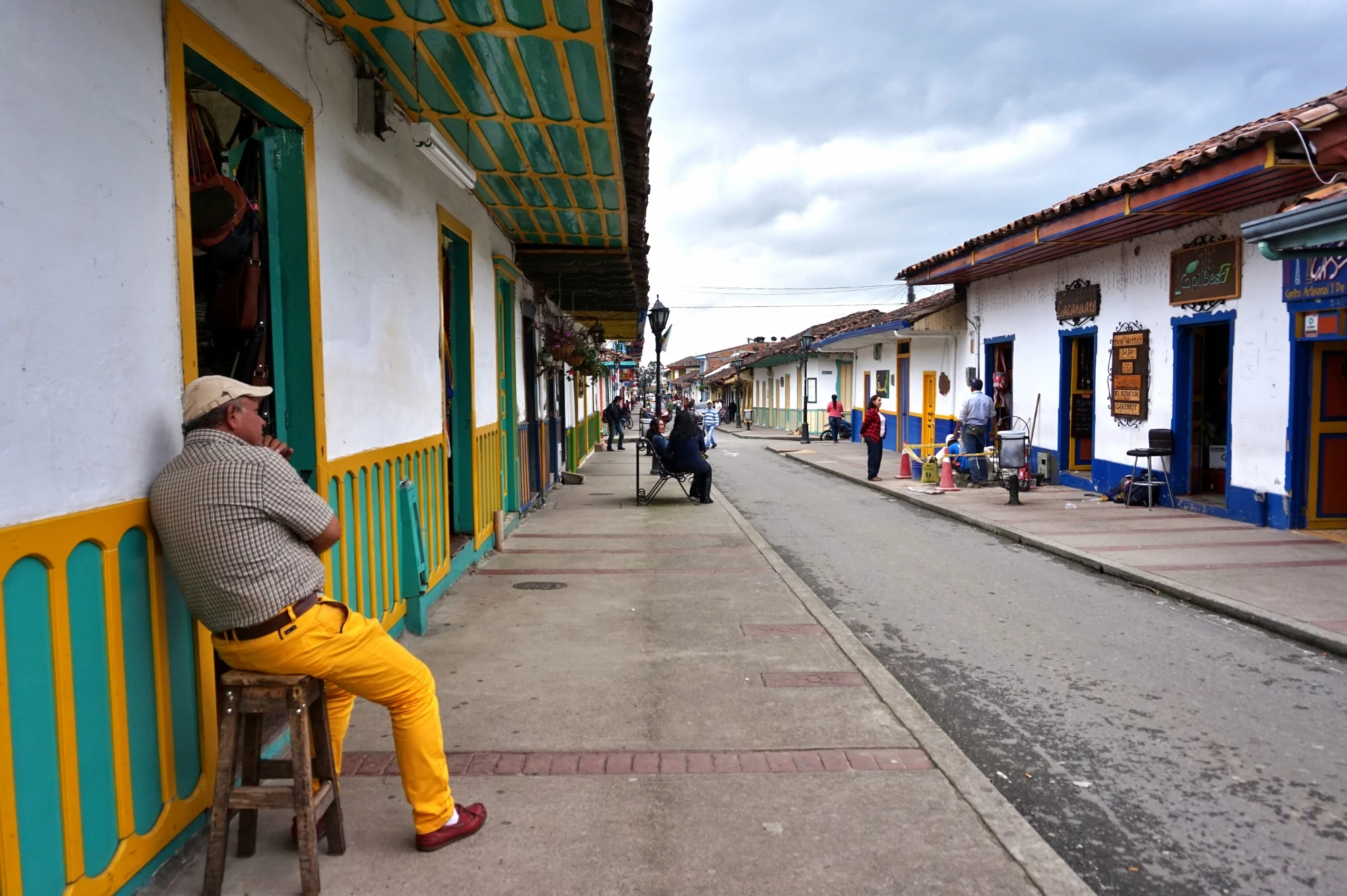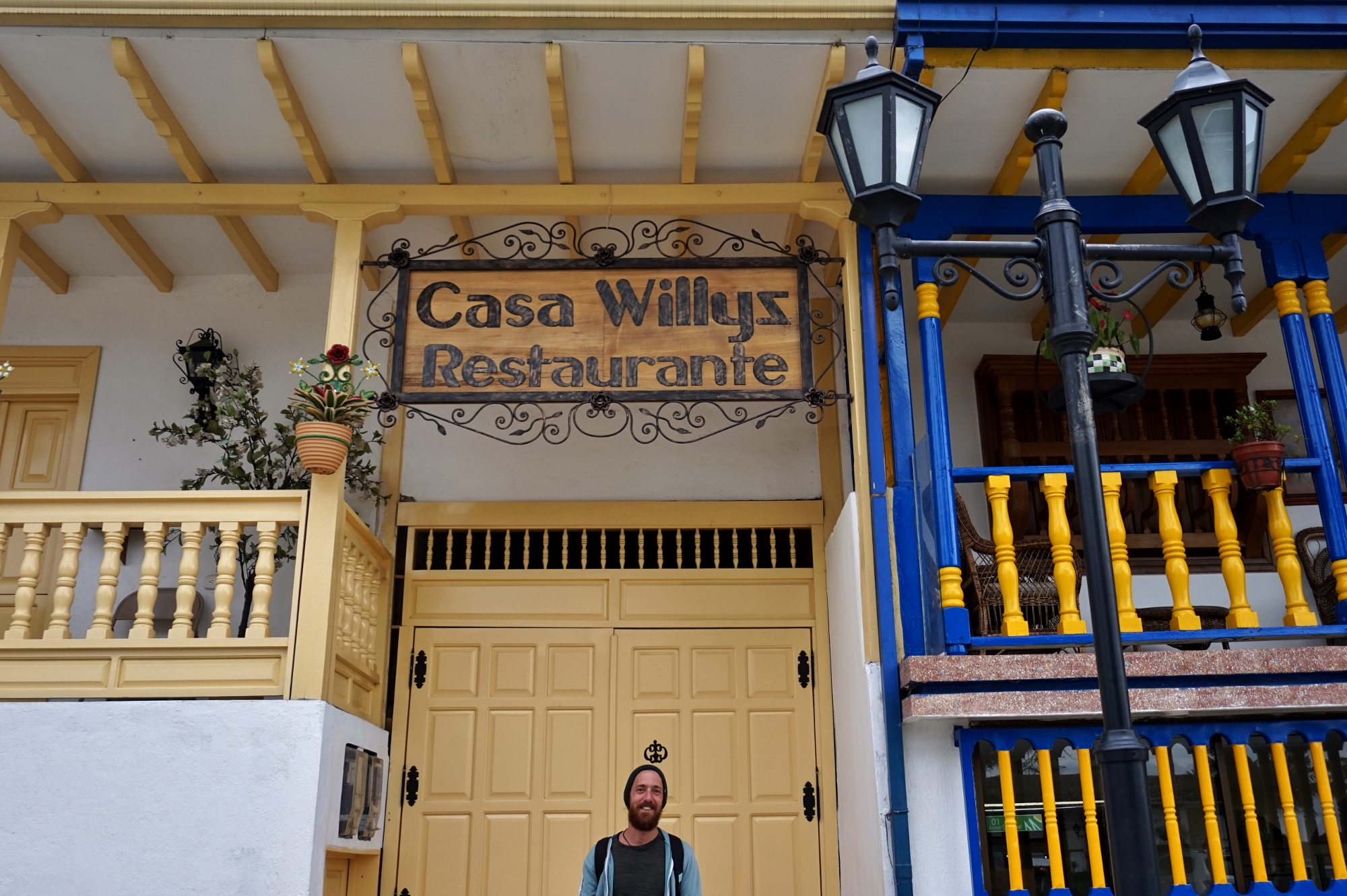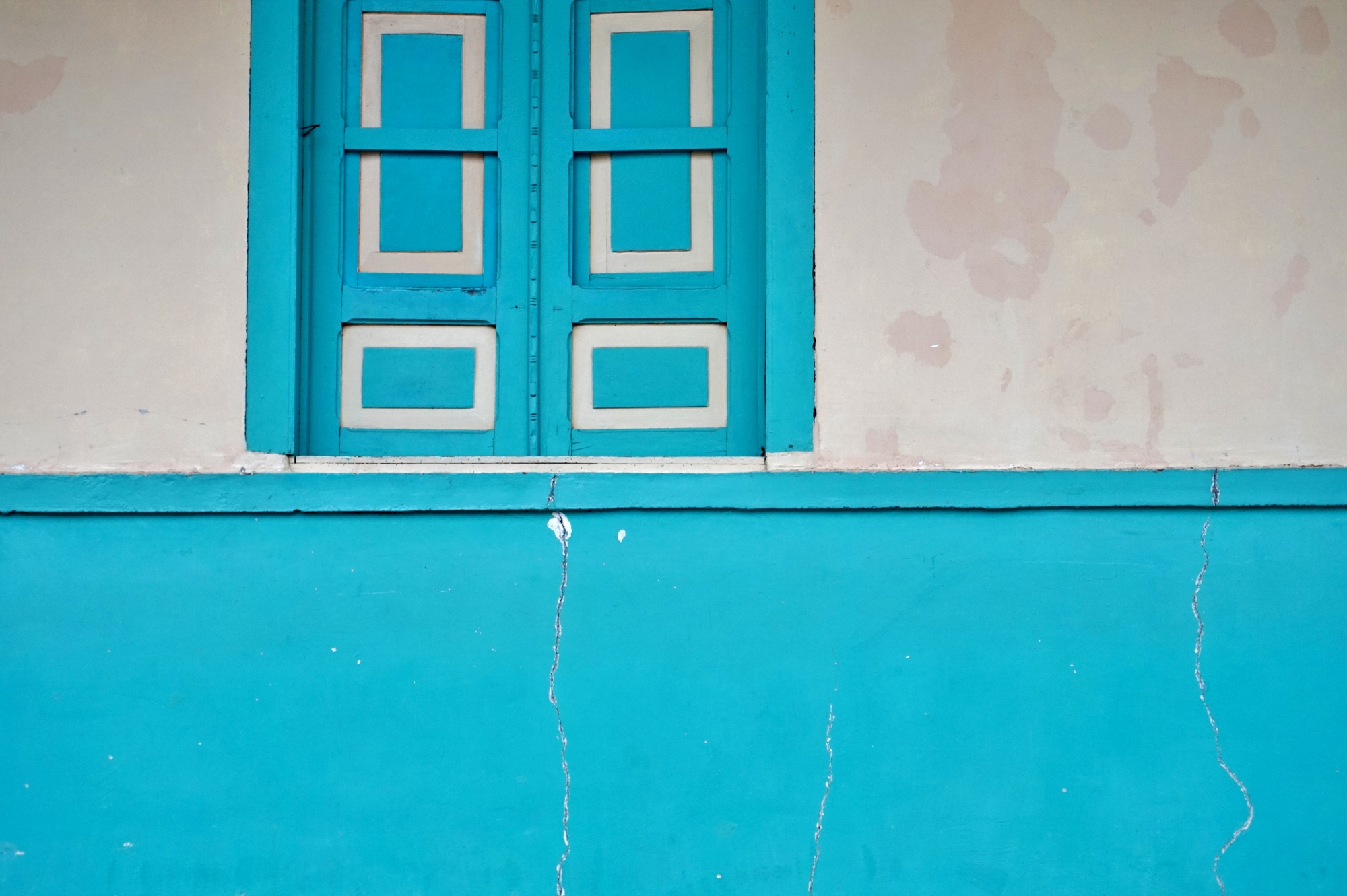SALENTO

After bidding farewell to Jair and Jaguar we made for the small yet picture perfect town of Salento. We had been warned it was very touristy but also very lovely. The bus dropped us in a brightly painted street of wooden shutters and panels. It was a bank holiday and everywhere was heaving with local Colombians enjoying the fresh air. We grabbed a bite to eat in Meraki a colourful trendy restaurant that wouldn't have looked out of place in east London. They served really good Thai food surprisingly.
We stumbled across a hostel called Plantation House run by a Brit called Tim, his Colombian wife and their two giant dogs Bonnie and Sebastian. It consisted of a bunch of charming little houses with blue and yellow wooden terraces set amongst a thick little woodland.
We walked past the main square up Calle Real. It was heaving like a crowd heading to the main stage at Glastonbury. If ever there was a picture perfect Colombian street this was it. My problem was it was almost too perfect and lacked some of the rustic charm of the other little villages we had passed through over the previous days. It was still a lovely setting to stroll along with the Colombian families enjoying their day off.
We followed the masses up to the mirador at the end of the road. The views over the town were lovely however the sugary snack vendors, lovers smooching and hundreds of selfi takers were not. However if you can't beat them join them, I kissed H on the cheek and took a selfi whilst Andy bought something that we think was crunchy sugar with a runny sugar filling. It was horrid. With the view point viewed, we headed down to a cafe perched over another nice view for a coffee followed by a beer.
After opting for AeroPress the barrister asked if we knew the history of this technique. In my head I thought... sure it's a new fangled high tech looking filter probably invented by pretentious hipsters in Melbourne to make you feel inferior when ordering coffee. Of course I was wrong and surprised by the answer. It actually wasn't that new at all. Whilst fighting in the war the English officers noticed that the Italian soldiers were very alert and fought with so much energy. They put this down to the fact they were always drinking coffee. The English set about inventing a simple, light way that English soldiers could prepare coffee in the field which resulted in the birth of the AeroPress. Not only is it small, light and easily transportable, it uses an air tight seal to push the coffee through a filter creating a super smooth taste and almost zero water waste. The granules form a solid puck which is simply popped out into the bin. The rights to this contraption were then bought by Nasa due to the fact that the air pushes the water through the coffee, and so doesn't need gravity to function - pretty handy in space!
Later we wandered back into the heart if Salento and pulled up a chair in Bar Danubio, an orange and white painted traditional bar. This is probably one of the most fascinating bars we have visited in Latin America. To start things off the bartender had a perfect handle bar moustache and showed zero emotion. Next to him was an amazing old cylindrical metal coffee machine with pipes and odd attachments sprouting off all over the place. The back of the bar was filled with pool tables and Carom billiards where players strike three balls around a table with no holes. Near each table was a cue rack where all different kinds of wooden cues were padlocked to the wall. Three men were standing towards the back. One is draped in a large beige striped poncho, two of them are wearing large brimmed Panama hats and all three have amazing handle bar moustaches. Traditional tango music is playing, to which some of the men are singing or bopping along to. Somehow we had stumbled upon a slice of authentic old Colombia in the middle of a bustling tourist street. There weren't any women about except the odd curious gringo. You would assume to finish off such a scene the air would be filled with cigar smoke and they would all be knocking back the beer.However this was not the case. Almost every one of the men were drinking coffee out of flowery crockery with a golden rim. One or two even extended a little finger on the sip.
Half way through the evening a terrific storm rolled in, resulting in all the lights going out in the whole town. For a wonderful brief moment, before anyone had a chance to reach into their pockets to select the torch function on their phones, the bar was in complete darkness.
Cocora Valley
From Salento's colourful main square you can share a lift to the start of some walking trails up into the Cocora valley. You just need to hang around until there are enough people to over fill a jeep.
It's famous for passing a palm forest with some of the tallest palms on the planet and a humming bird sanctuary. After rattling our way through the valley we set off down a muddy track on what we thought was the right path. After crossing a few streams, meeting some other lost folk, hopping a gate or two and ascending and then descending a few hundred meters we realised it wasn't. (Probably should have realised sooner, maybe before hopping the first gate).
Our two hour detour dropped us off on the proper walking route about half way through. We could either go one way back to see the humming birds and the valley or the other way to walk through the palms. Our off-piste jungle adventure was still a really pretty walk and guess what... we saw no tourists (That also should really have rang alarm bells as this walk is why many folk visit the area). We decided to descend from the ridge we were on all the way down into the valley to see the humming birds and get lunch. We didn't realise quite how far down it was and kept getting a hint of what was to come later looking at all the red faced panting, crawling and crying people coming up the other way.
Lost in the wilderness up a muddy trail, following a stream is a crooked wooden house and terrace. Chatting hikers and humming birds all mingle on the terrace for a much needed refreshment. There are three or four little bird feeders along the terrace which attract hundreds of super tame super speedy humming birds in all colours and shapes. Our particular favourite was one with a long slender royal blue tail. We sat at a wooden table and ate cheap lunch watching the little guys zip about.
None of us wanted to leave the hummingbird sanctuary, mainly because of the colossal climb we had to tackle to get back up onto the ridge. Eventually we all powered up into the clouds that had engulfed the ridge. Our chances of seeing Salento's famous views over the tall palms was becoming more and more unclear. We set off along the ridge and by a sheer stroke of luck the clouds set off the other way. Soon the ridge was clear and the palms started to come into view.
They were incredible almost defying nature. They were so tall and so straight it looked like you could just push one over. (I checked this theory... you can't). In a black and white photo they would have looked like a forest of chimney sweep's brushes. We sat for a while enjoying this unique landscape before taking another off-piste route through the palms. It lead us along a narrow ridge that brought us down into the garden of a little bar / cafe. Perfect.
We had to wait quite a while for a jeep back to town as there weren't enough. Eventually we got one and I was lucky enough to ride standing on a foot plate at the back holding onto the roof racks for dear life. It was actually really fun and the surrounding fields were full of twinkling fire flies.
Don Eduardo Finca tour
Tim who owns Plantation House recommended a coffee tour to us when we arrived, stating that it was the best in Salento. It was with a guy called Don Eduardo. We later joked how funny it would be if Don Eduardo was actually Tim's Colombian alter ego. Turned out we hit the nail on the head.
Eight years ago Tim (or should I say Don Eduardo!?) bought an old farm about ten minutes walk from the hostel and has been perfecting his own coffee process. He offers daily tours for a good price where you can see the entire process from picking to drinking. We thought it would be good to see another tour plus we were sure a few things from Don Leo's tour got lost in translation.
After a slippery ten minute walk down a VERY muddy track we arrived at Finca Don Eduardo. His farm is on a steep hillside overlooked by a charming little house / factory. Tim has focused his farm on producing Tipica coffee from traditional arabica coffee plants, these are more flavoursome but hold less caffeine than Robusta. He is one of a hand full of people that still grows coffee like this as most farms opt for a lab created hybrid plant that have both Aribica and Robusta. Generally meaning (A) smaller sizes so you can plant more and harvest easily (Tims Tipica trees need to be lassoed and bent over so coffee pickers can reach the harvest) (B) They don't need shade (Tim has needed to plant many fruit trees next to his coffee plants to offer shade), (C) they are more resilient to the weather and (D) slightly bigger coffee cherries (Bigger cherries sell for more). All this means more money. So instead of becoming a coffee tycoon Tim is following a formula used in the wine and olive industries. Soon you will be able to buy a row of coffee plants online. You will then be able to have a say in how they are grown. When they are harvested your coffee is bagged up, roasted and sent to your door.
The initial process is the same as over at Don Leo's Finca so I won't go through that again.
However Tim's right hand man took us through the roasting process. It smelt amazing as he toasted the beans in a battered up metal pan over a stove. They started popping like popcorn and turned a chocolate brown. After about ten - fifteen minutes he ground the beans in an old metal grinder screwed to the work bench. This released even more intense aromas.
Then he poured it into a paper filter and added hot water. It was a really smooth cup of joe and had an almost caramel taste and smell.
After the tour we went for a short walk around the farm. We past various fruit and coffee plants eventually descending into a thick bamboo forest. A lot of the farm house is made from this bamboo. According to Tim this type of bamboo can grow between 10 - 15 cm per day. In the rainy season it sucks up a vast amount of water which is stored in the trunk, it is then released back into the soil in dry season. A fun fact Tim mentioned was that similar to the ocean tides, the amount of water in the trunk is controlled by the Moons gravitational pull, meaning there are certain times in the month that are much better for cutting down bamboo for building with.
We spent the rest of the day sipping coffee, eating a massive peanut butter brownie at a diner called Brunch and wandering the pretty streets until it was time to catch the last bus out of town and onwards to Medellin.


